Holy Land Pilgrimage, November 7-16, 2022
by Dr. Alyce McKenzie on Monday, November 21, 2022
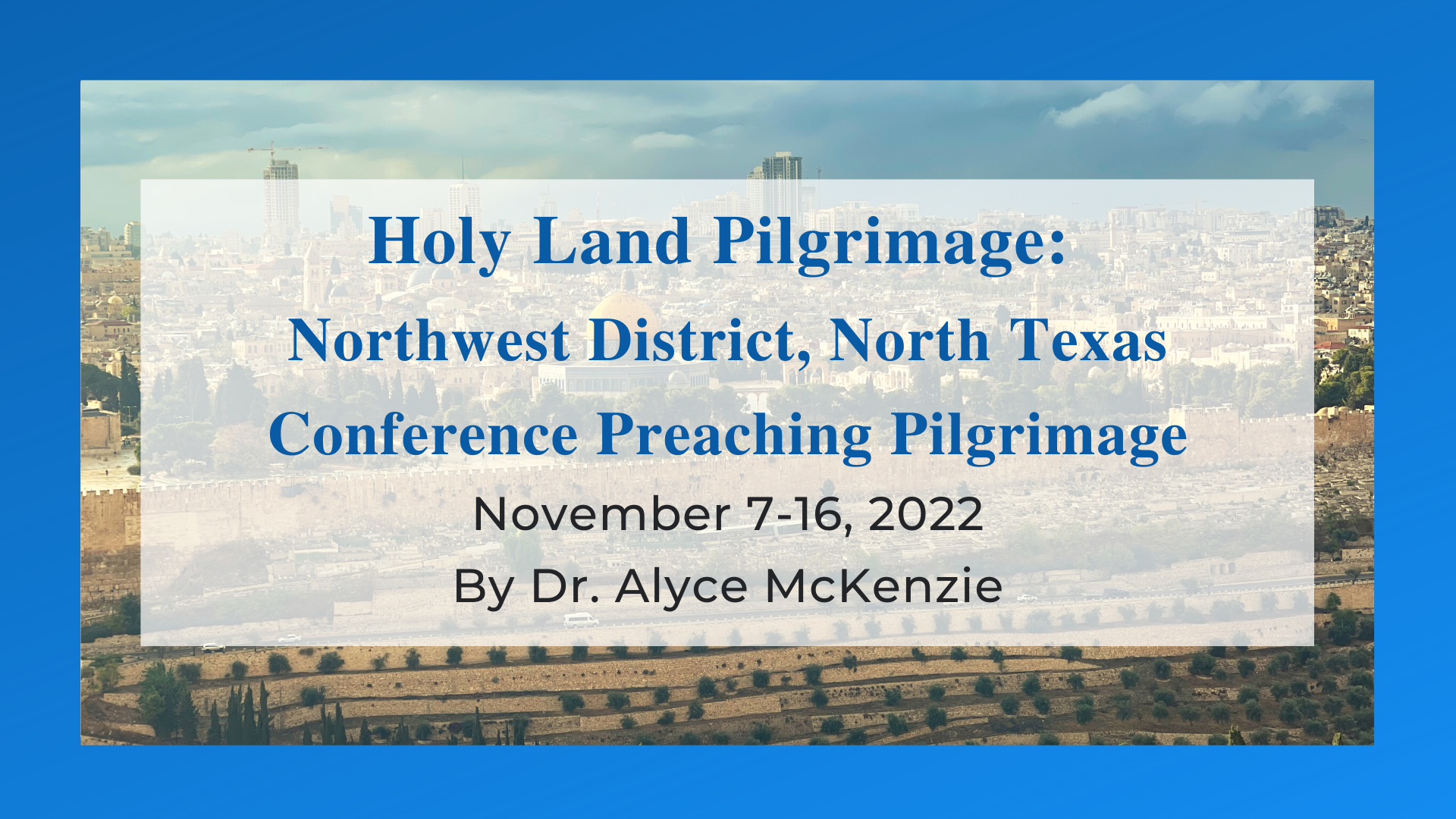
Holy Land Pilgrimage:
Northwest District, North Texas Conference Preaching Pilgrimage
November 7-16, 2022
It was a privilege to be invited by Rev. Todd Harris, District Superintendent of the Northwest Texas District of the North Texas Conference, UMC, and Rev. Johnny Irish, retired pastor from the North Texas Conference, to be the lecturer for a Holy Land Tour November 7-10, 2022! We planned it as a preaching pilgrimage, whose purpose was to help pastors process their firsthand experiences of scenes from the first Testament and from Jesus’ life to share them with their congregations back home. I planned evening teaching sessions called “Workshops Along the Way,” based on my book Making a Scene in the Pulpit: Vivid Preaching for Visual Listeners. We honed our skills of observation, what I call our “Knack for Noticing,” in entering into each scene, alert it's SPCA: setting, plot, character, and theme.
I visited with the group on zoom and in person in the months before our trip. I talked about the “Three C’s of Pilgrimages.”
- They involve getting out of our comfort zones
- They are communal – we don’t make them alone. We need each others’ protection and support along the way.
- They bring about change – in our thoughts, emotions, and actions.
Monday, November 7
Our group of 27 pastors and spouses gathered at DFW Monday afternoon, November 7 for our 9-hour flight to Frankfurt, Germany, endured a five- hour layover there, catching our next 4-hour flight to Tel Aviv. During the flight to Frankfurt, I watch Top Gun Maverick, a stressful movie to watch on a plane, and half of Death on the Nile. I feel asleep after the murder victim had been shot and never found out who did it - until 10 days later when I got to watch the second half on the trip home.
We were met at the Tel Aviv airport by our dynamic Educational Opportunities Guide who told us to simply call him “G” for the bus ride to the Olive Tree Hotel in Jerusalem. After dinner and an evening of rest, we set out the next morning for a full day of scene-visiting! Once G found out we were pastors, he added stops to our itinerary so we would get a fuller experience of the rich history and faith connections we had come to explore.
While I took notes and lots of pictures, some of my notes are indecipherable due to scribbling them on the bus and some of my pictures have no captions. “Pile of stones,” is not specific enough, I know. So what follows is my best recollection of our itinerary. If I have some things out of order, chalk it up to human error!
The first day
Jericho - city conquered by Joshua in Joshua 6:1,2,20, setting for the dinner invitation Jesus offers Zacchaeus (Luke chapter 19), and the healing of blind Bartimaeus (Mark chapter 10). The road from Jericho to Jersusalem became a metaphor for the risks and dangers of our lives.
In the distance, we could see the Mount traditionally identified as the location of Jesus’ temptation by Satan. The sheer desolation of the setting and the complete lack of resources for sustenance for Jesus brought home to us the extremity of his temptation.
We proceeded to Qumram, the site of the discovery of what has come to be called the Dead Sea Scrolls, learning more about the ascetic community of Essenes at Qumram. I had no idea how many baths they took every day! We contemplated the amazing, coincidental, providential, serendipitous (choose your adjective!) discovery of the scrolls by shepherd boys looking for their goat in 1947. It became for me a metaphor for the crucial things in our lives that may go undiscovered for decades.
Mount of Olives Our visit to the Mount of Olives brought reflection on the fact that this same site was the setting for Jesus’ agonizing decision to see his mission through to the end on the evening before his crucifixion (Matthew 26:30), and his Ascension (according to Acts 1:9-12). Agony and vindication all in the same location.
We visited the Jordan River, the site of Jesus’ baptism by John. Led by Rev. Todd Harris, we reaffirmed our baptism by the shore.
From there we traveled to Gethsemane, the scene of Jesus’ agony in the Garden, and saw the beautiful Church of All Nations, or Church of the Agony built nearby. The two stags at the top of the building symbolize the deer longing for flowing streams of Psalm 42.
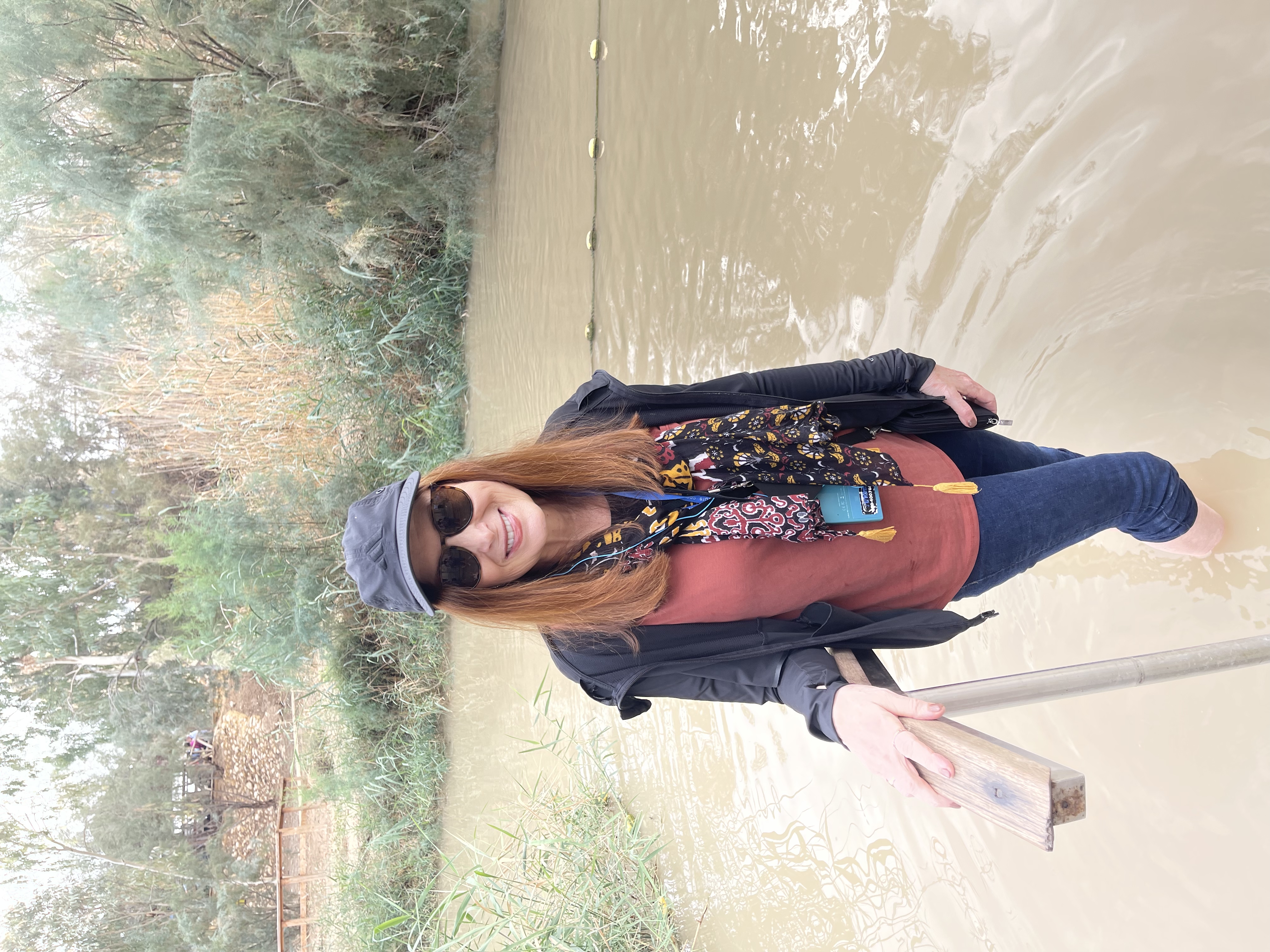
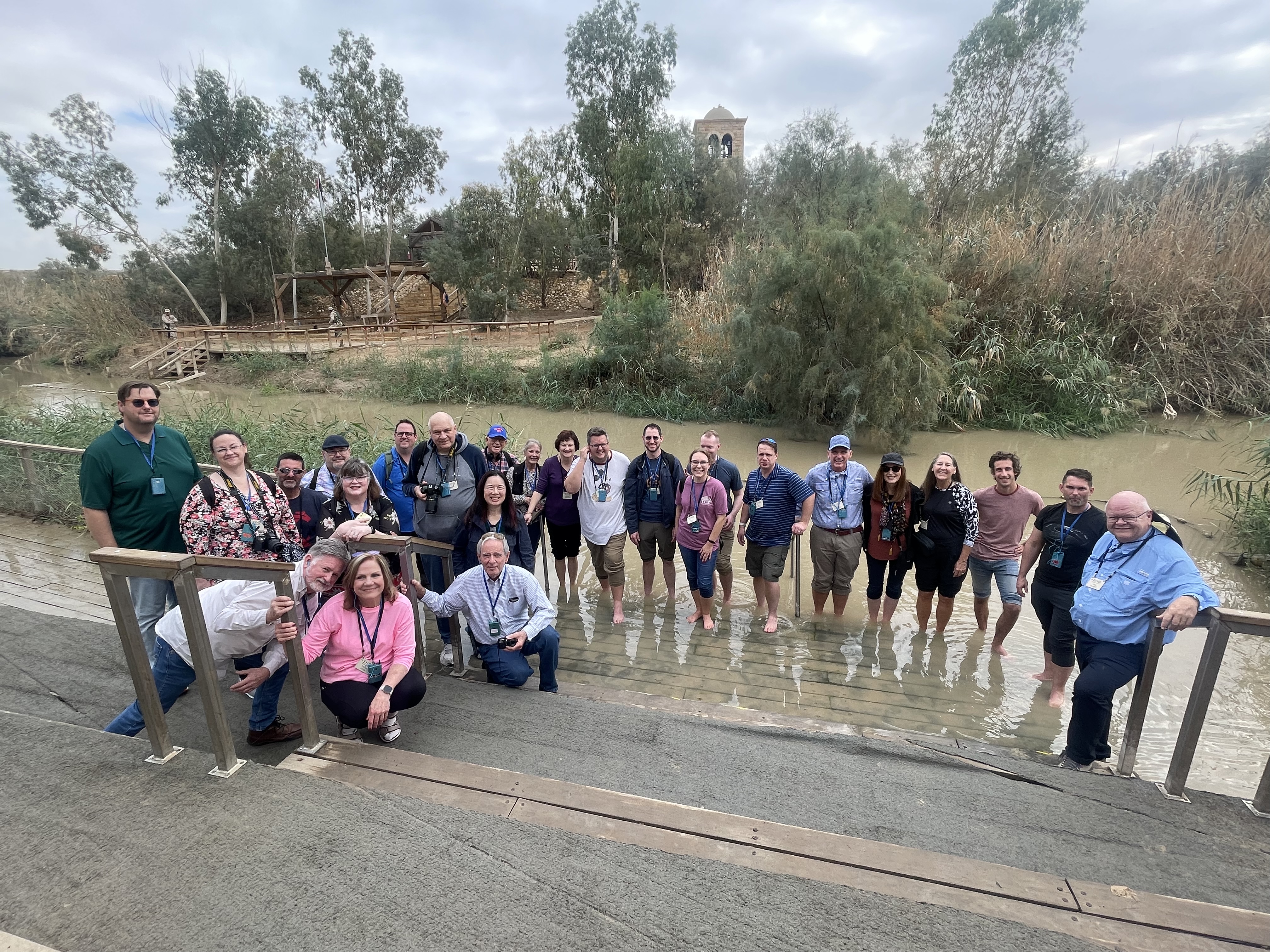
By the Jordan River
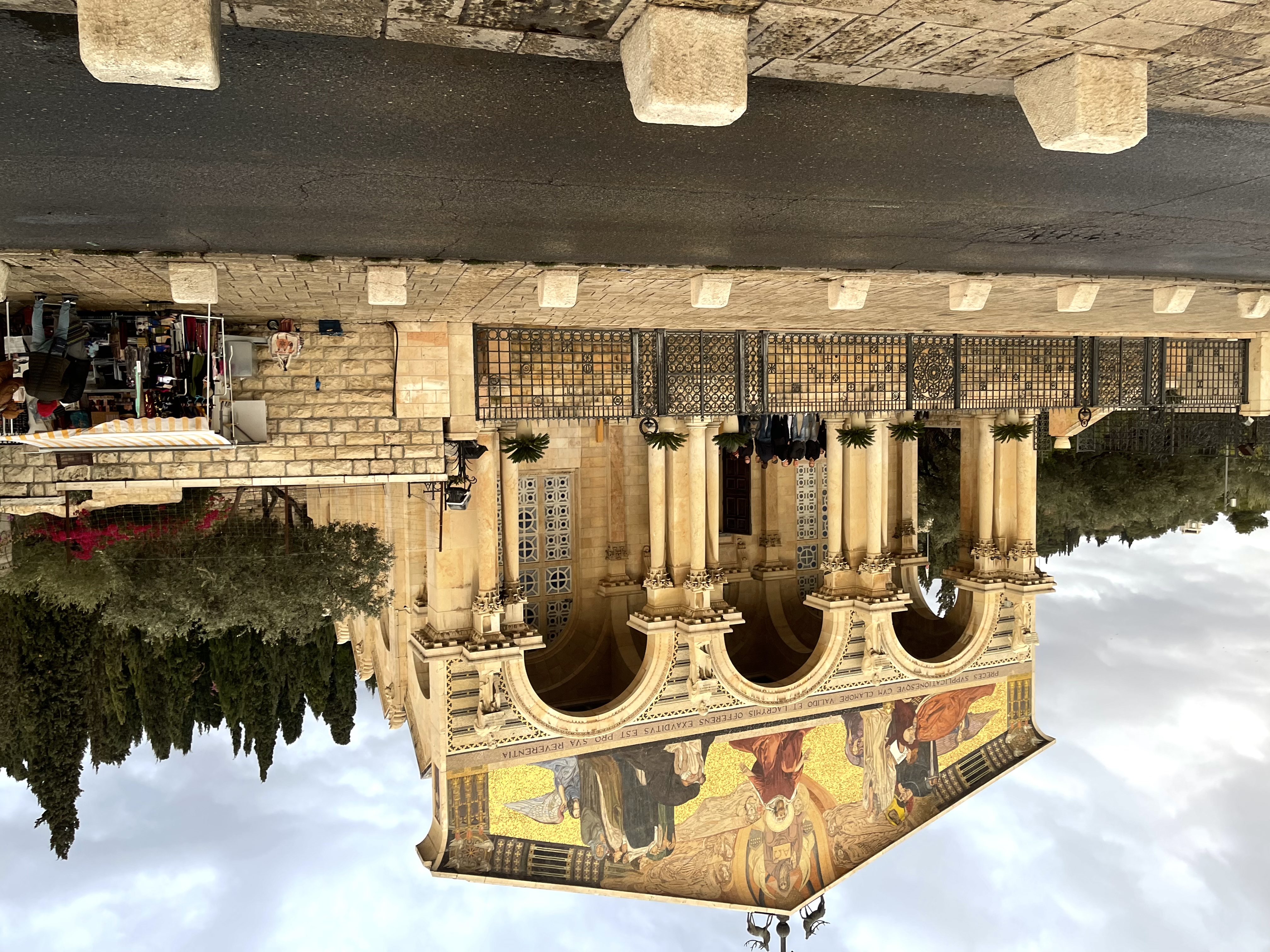
Church of All Nations - Adjacent to Gethemane
.jpg)
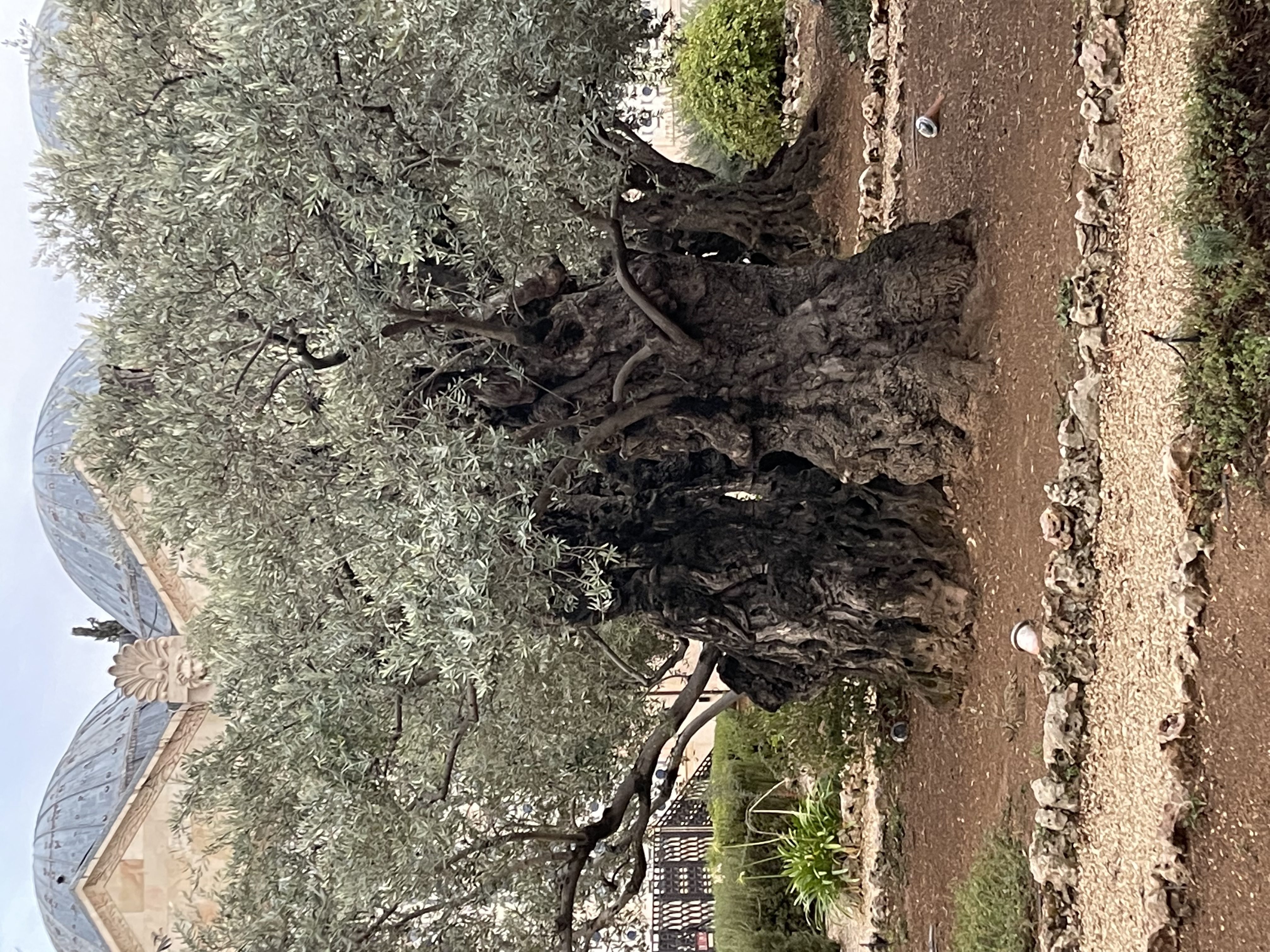
Mount of Olives; Olive tree in the Garden of Gethsemane
.jpg)
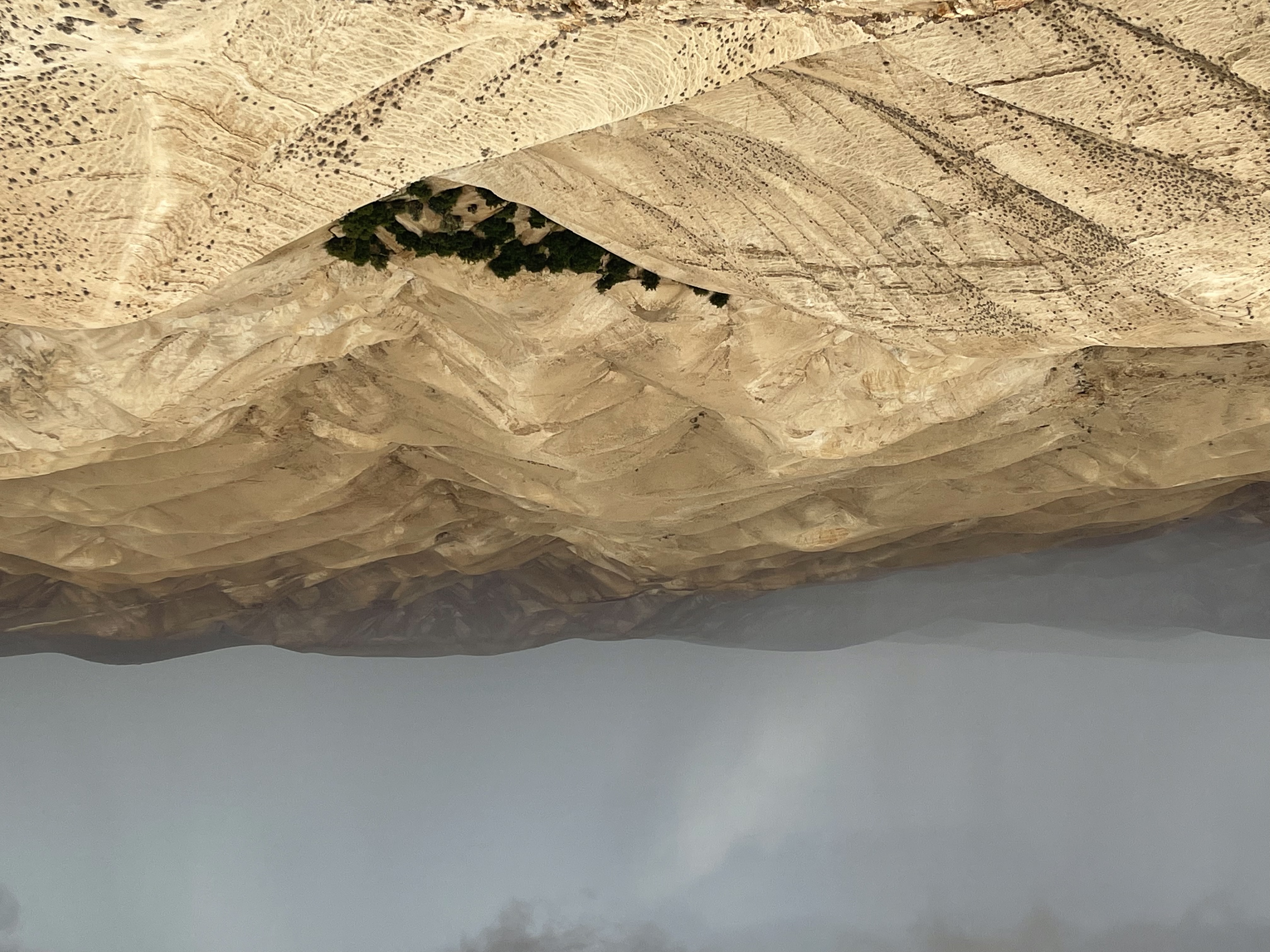
Qumram; Valley of the Shadow of Death
Our second day of touring began with the 6th-century Church of the Nativity in Bethlehem. Some interpret this as a sign of humility, that you have to make yourself lower to enter, but I am more convinced by the theory that the reduced height of the entry door was designed to prevent marauding horsemen from galloping in to destroy the church.
We saw the entry to Jerome’s cave where, in 386 he began his decades-long work of translating the Scriptures into Latin (the Vulgate). I would have chosen somewhere with better lighting, but it seemed to have worked for him.
We continued on to Shepherd’s Field and saw the Church of Shepherd’s Field and the cave where the shepherds are said to have sheltered their sheep on the night of Jesus’ birth. We celebrated communion in a nearby chapel, reflecting on God’s habit of revealing godself to those society regards as the least and the lowest.
Our next stop was the Upper Room, whose stark simplicity was a marked contrast to some of the elaborate church interiors we had seen up to this point. It was crowded with pilgrims from all over speaking in multiple languages. There was a group that was slain in the spirit and speaking in tongues.
We proceeded to the house of the high priest Caiaphas, where Jesus was questioned, mocked, beaten, and imprisoned the night before his trial and crucifixion. Seeing the below-ground cell into which Jesus was lowered and spent a night alone and in darkness was particularly moving. Our guide G pointed out that he was deserted by everyone and everything but darkness, his only companion. It made me think that this is the experience of many people to whom we preach.
We stood on the purported spot in Pilate’s headquarters where the soldiers stripped him, and put a scarlet robe on him and a crown of thorns before leading him away to be crucified. We often skip over the physical, sexual humiliation involved in being stripped naked in front of a crowd, the fear and vulnerability of that experience.

Shepherd's Field
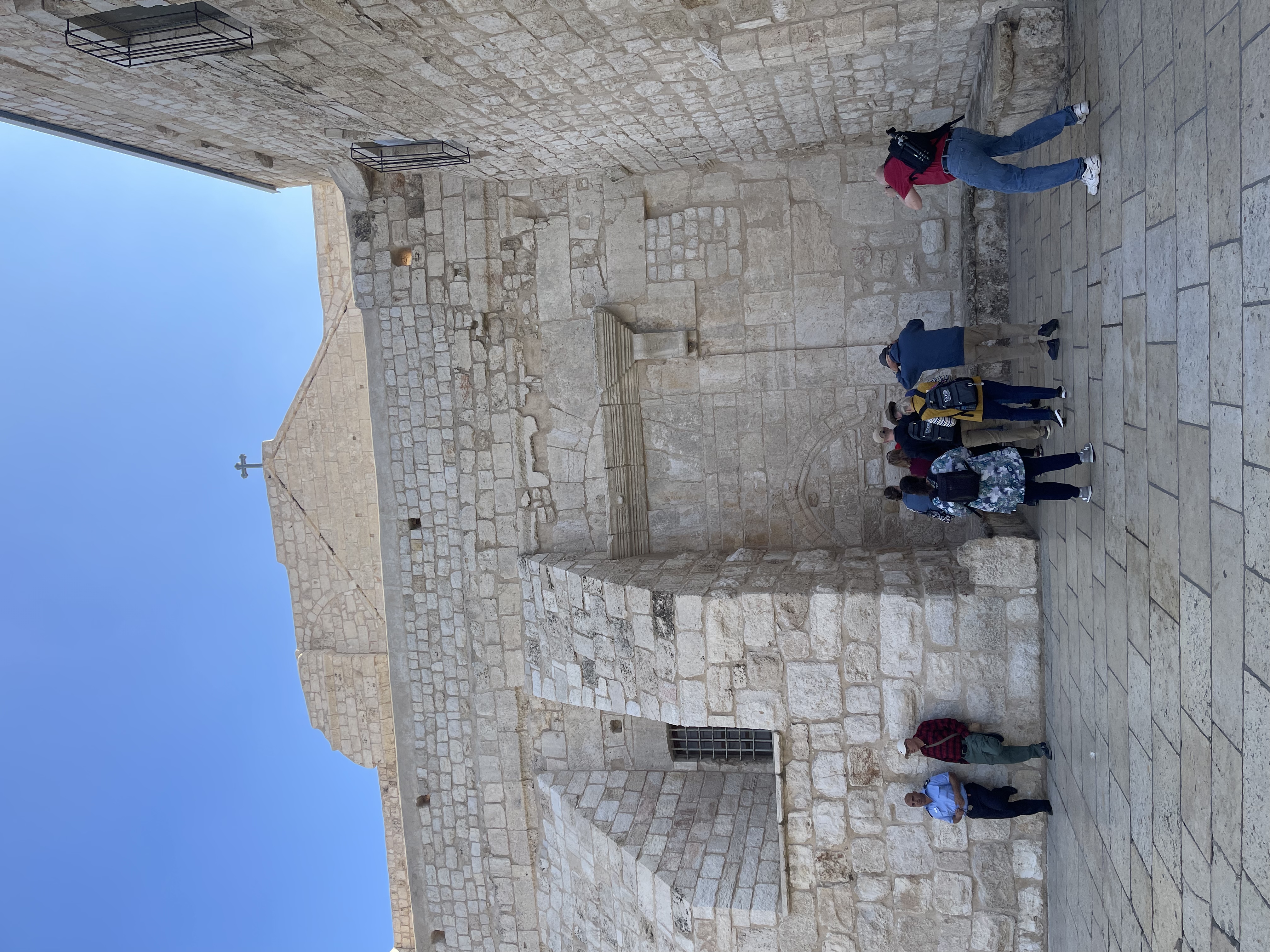
Church of the Nativity, Bethlehem
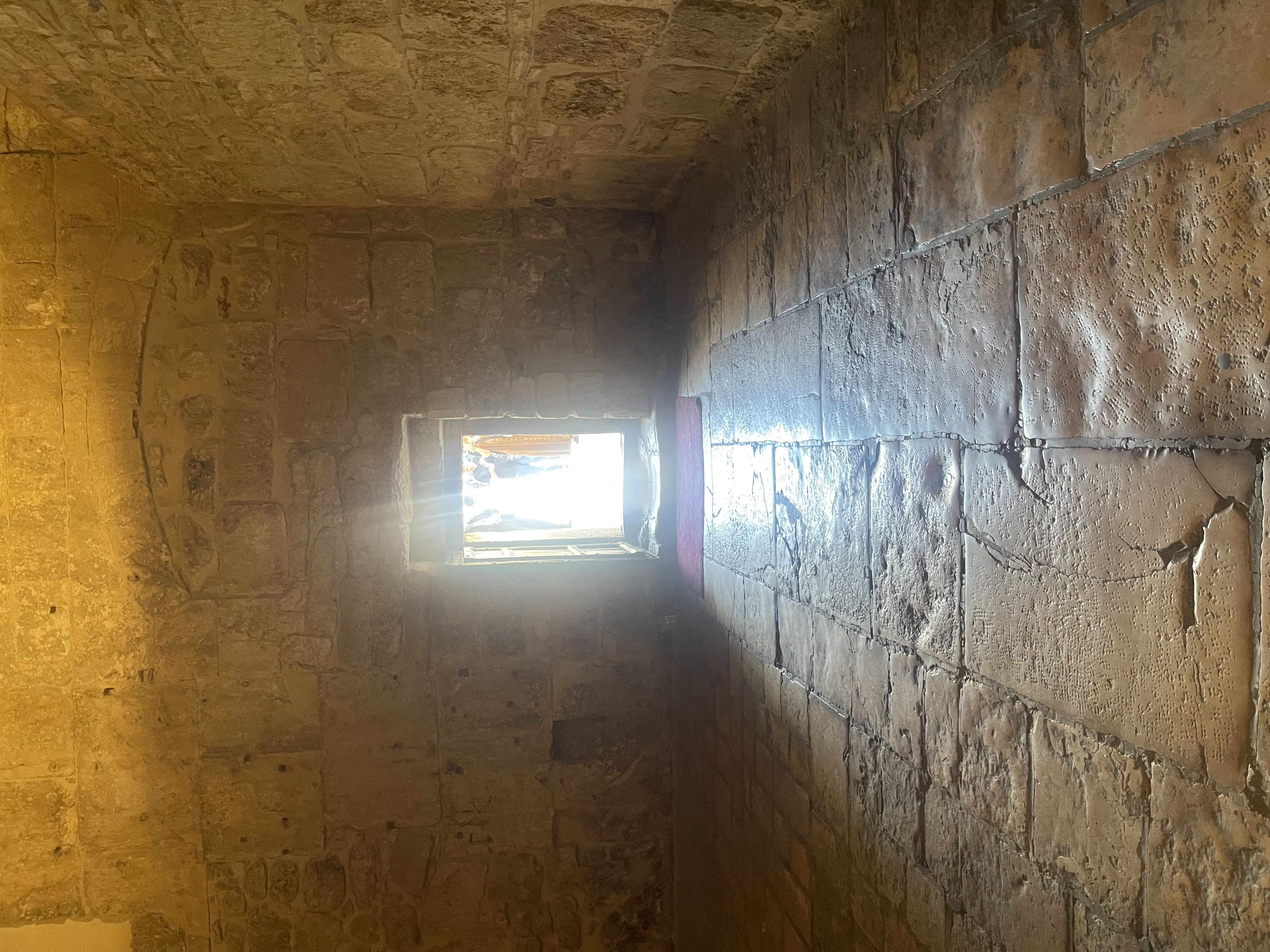
Doorway to enter Church of the Nativity in Bethlehem
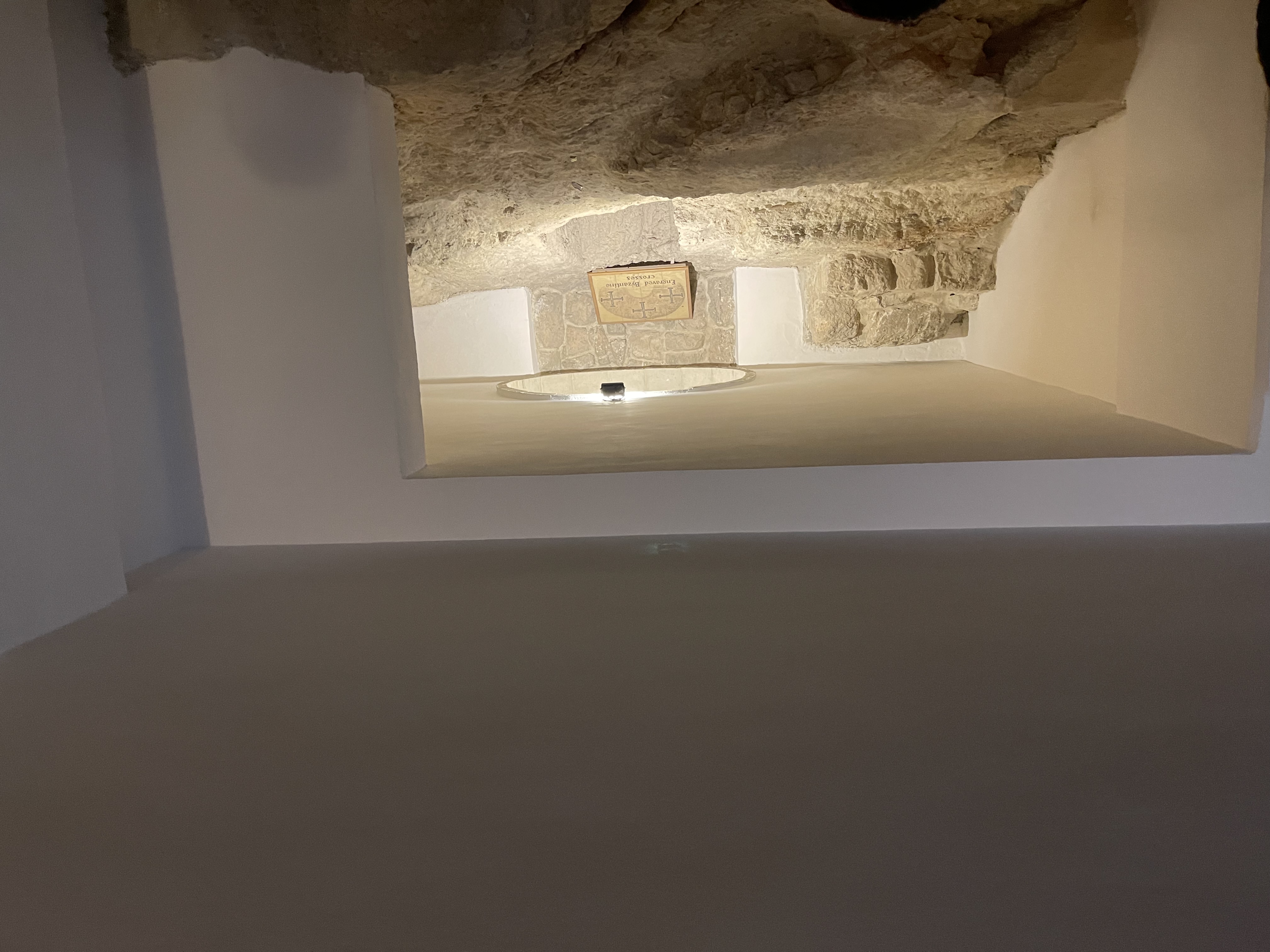
Entry to the underground cell where Jesus was lowered to spend the night before his crucifixion
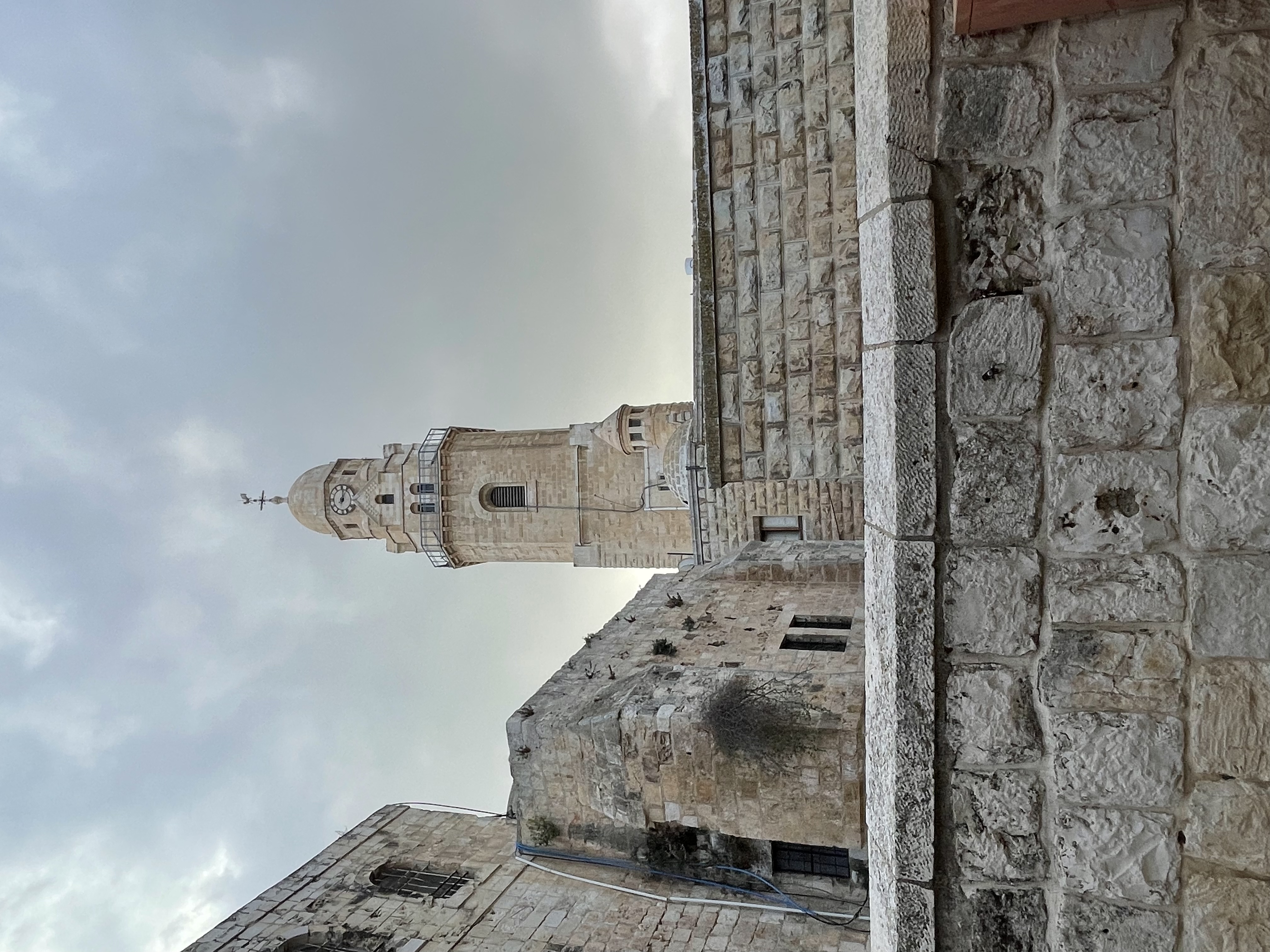
House of High Priest Caiaphas
The next day we headed to the Teaching Steps or the Rabbis’ Steps where Jesus would have taught when in Jerusalem as well as the Western Wall, or the Wailing Wall, the site of centuries of prayers for peace, to which we added our own. We saw the Hasidim whose daily vocation is to pray, as well as many devout people of all ages, including a number of youth from nearby schools.
We visited the Pool of Behzatha where Jesus, as recounted in the fifth chapter of John, healed a man who had been paralyzed for 38 years. We reflected on Jesus’ question “Do you want to be made well?” and its significance for us and our congregations.
We walked the purported path of the Via Dolorosa, taking in the everyday sights, sounds, and smells of merchants selling souvenirs, everyday goods and food. We reflected on the fact that the crucifixion of an obscure prophet from Nazareth would have taken place in the midst of people engrossed in everyday pursuits, for whom the cruelty of Roman executions had become mundane occurrences. His passing by would not have caused many of them to look up from their daily rounds.
Another stop on this day was the Church of St. Anne. The Church of St Anne is the best-preserved Crusader church in Jerusalem. It marks the traditional site of the home of Jesus’ maternal grandparents, Anne and Joachim, and the birthplace of the Virgin Mary.
From there we visited the Church of the Holy Sepulchre which is home to the purported location of the crucifixion, the empty tomb, and the Stone of Unction, a large slab of stone placed inside the church of the Holy Sepulchre, between the Golgotha (the hill of the crucifixion of Jesus), and the Tomb of Jesus. By local tradition, on this rock Jesus' body was laid and prepared for burial.
This was my second visit to the Church of the Holy Sepulchre. My experience of it was the same in 2022 as it had been on my last visit back in 2014. it was so crowded with so many seeking to see and touch the holy sites that I contented myself with prayerfully walking through the Church, not able to get too close to anything other than to place a prayerful hand on the stone slab where Jesus’ body may have lain, as Joseph of Arimathea and Nicodemus prepared it for burial, the Stone of the Unction, a large slab of stone placed inside the church of the Holy Sepulchre, between the Golgotha (the hill of the crucifixion of Jesus), and the Tomb of Jesus. By local tradition, on this rock Jesus' body was laid and prepared for burial.
I decided to interpret this crowded, noisy experience as a result of the hunger of those present for an experience of Jesus. While appreciating that almost desperate hunger, it brought home to me that our experience of Jesus doesn’t depend on the historical veracity of precise geographical locations.
From there we visited Skull hill and the Garden Tomb. There are two purported sites for both the crucifixion and the empty tomb: the Church of the Holy Sepulchre or these two sites outside Jerusalem’s wall. Skull Hill, a skull-shaped hill in ancient Jerusalem is believed by many to be the site of Jesus’ crucifixion. It is referred to in all four Gospels (Matthew 27:33, Mark 15:22, Luke 23:33, and John 19:17).
The Australian pastor who served as a guide to the garden tomb/skull hill described the physiology of death by crucifixion in more detail than I’ve ever heard before, making frequent references to Psalm 22. The humiliation, pain, and death human beings wreck on other human beings stuns the mind and brings anguish to the spirit.
From Skull Hill we moved to the Garden Tomb and, with the singing of pilgrims from around the world in our ears, we celebrated communion at dusk in a nearby outdoor chapel before returning to our hotel.
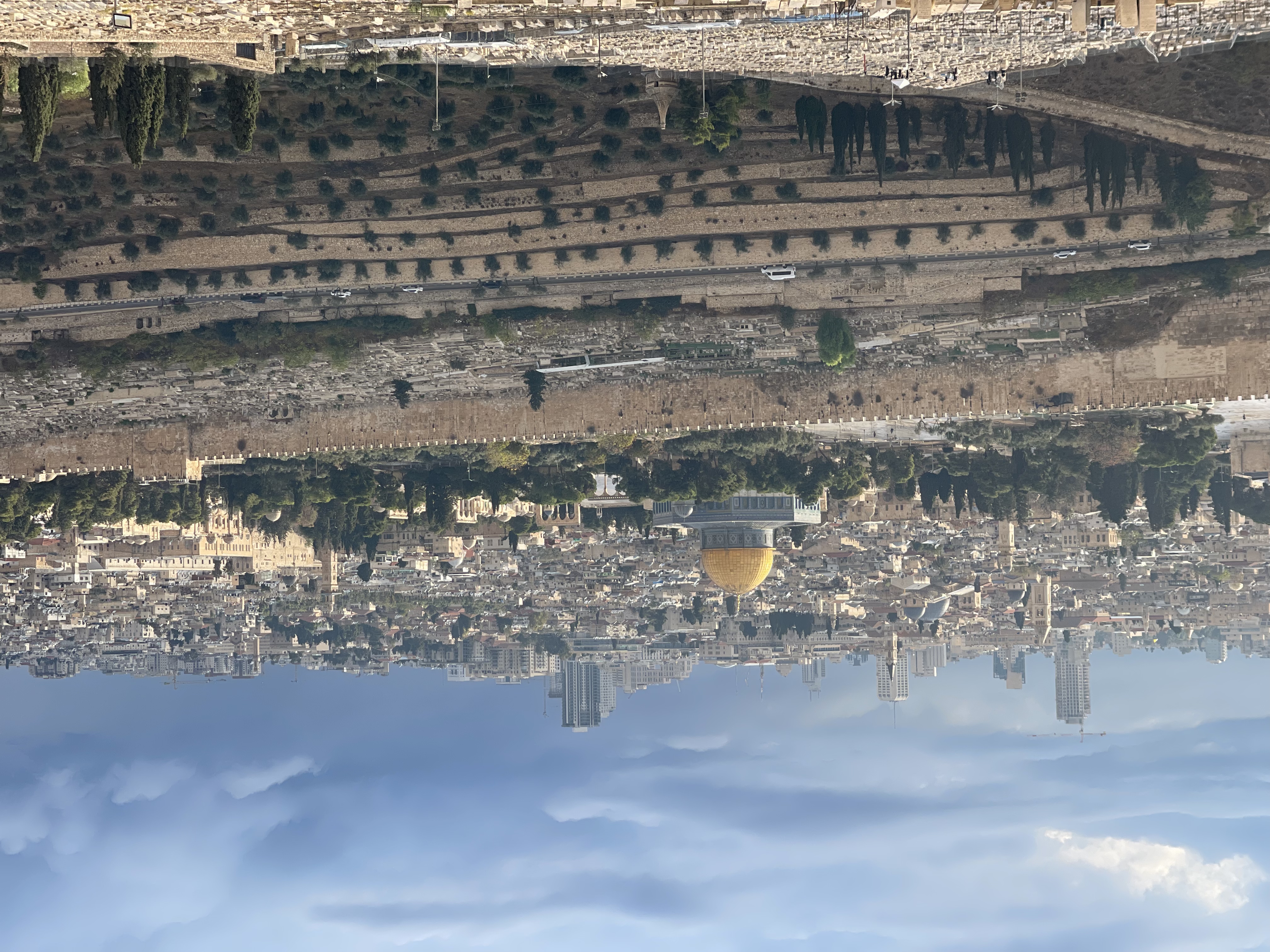

View of the Old City
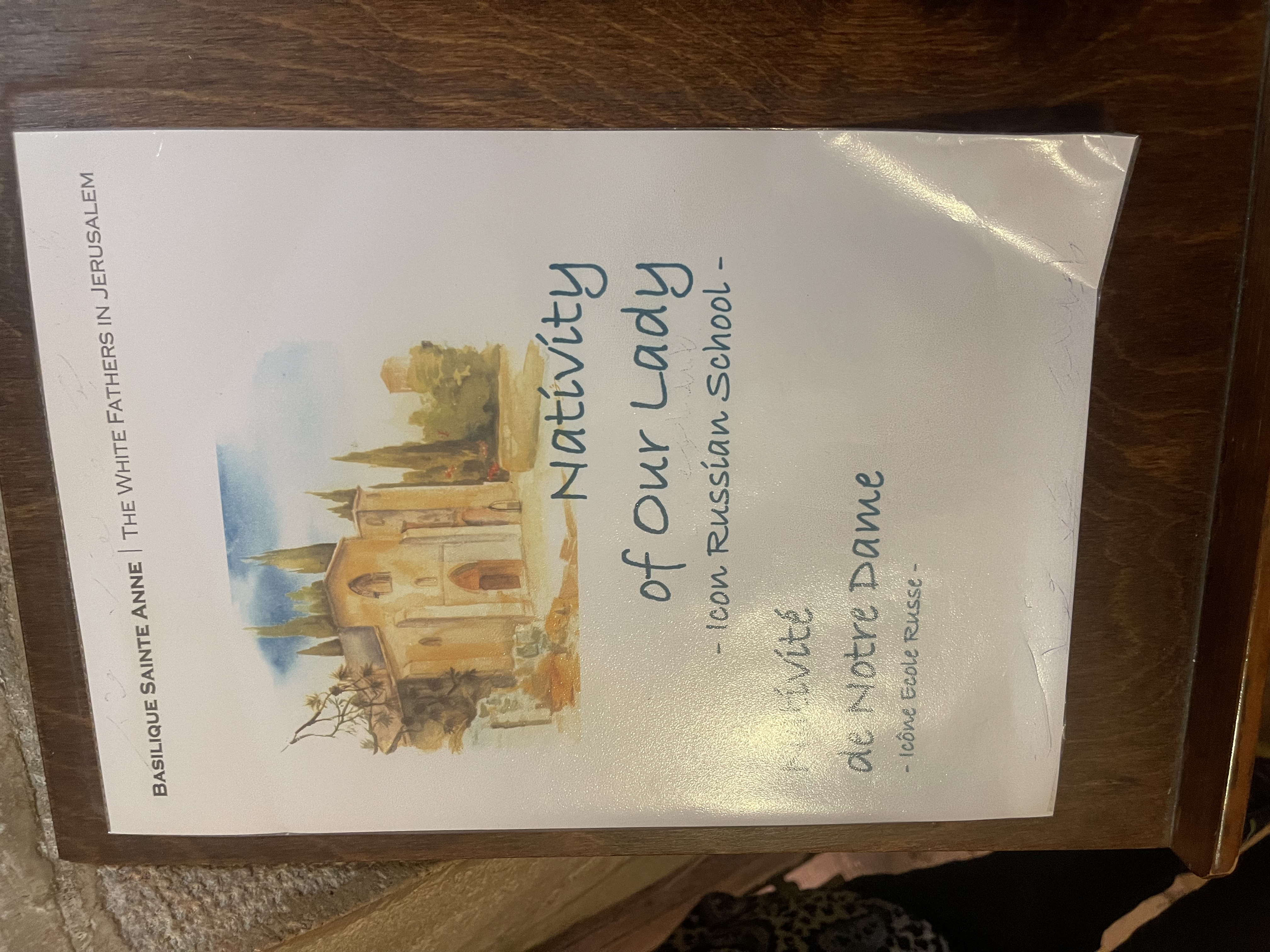
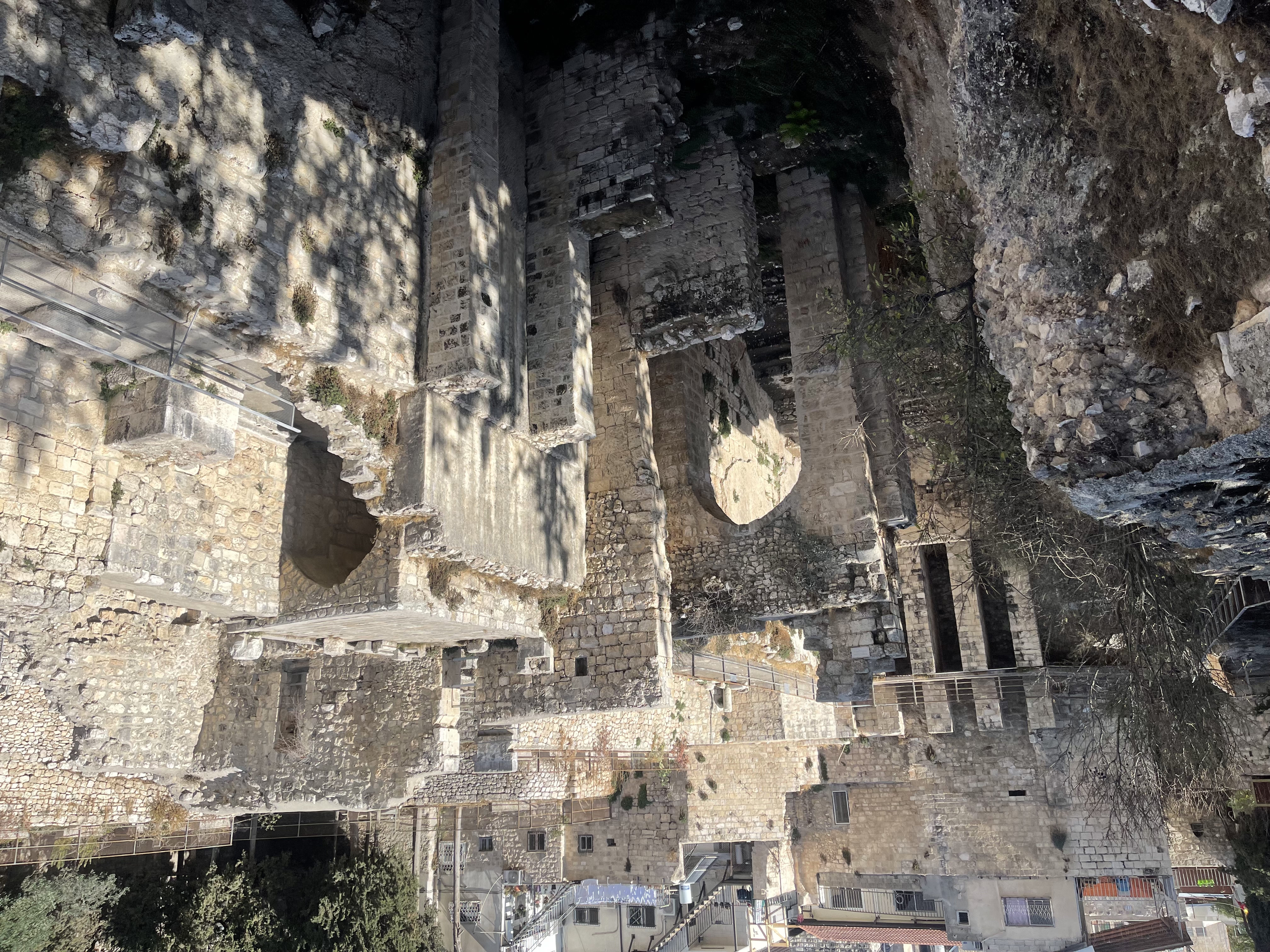
Church of St Anne, mother of Mary; purported birthplace of Mary; Pool of Bethzatha from John 5 - Jesus heals a man paralyzed for 38 years.
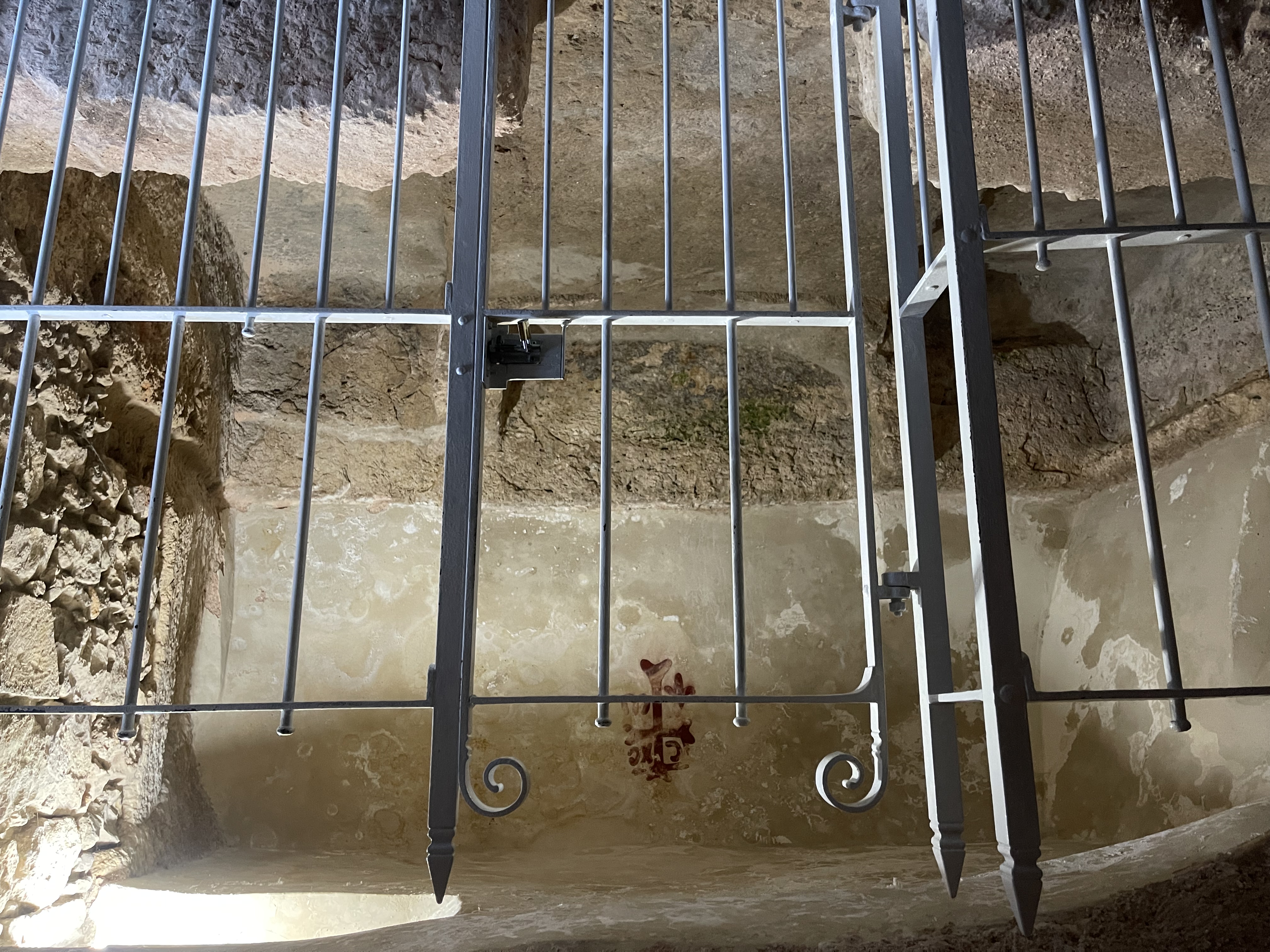
Purported site of Empty Tomb
.jpg)
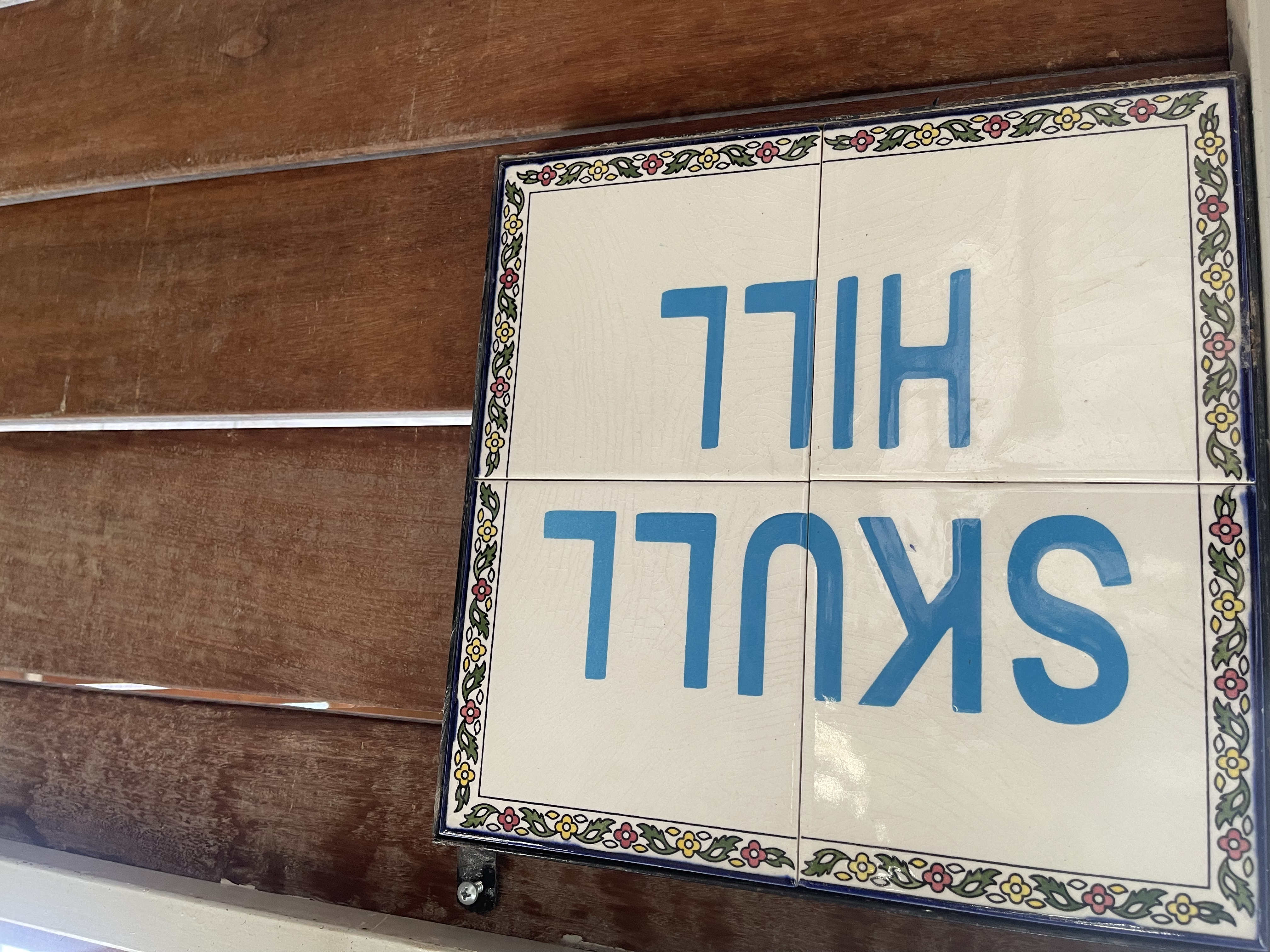
Skull Hill
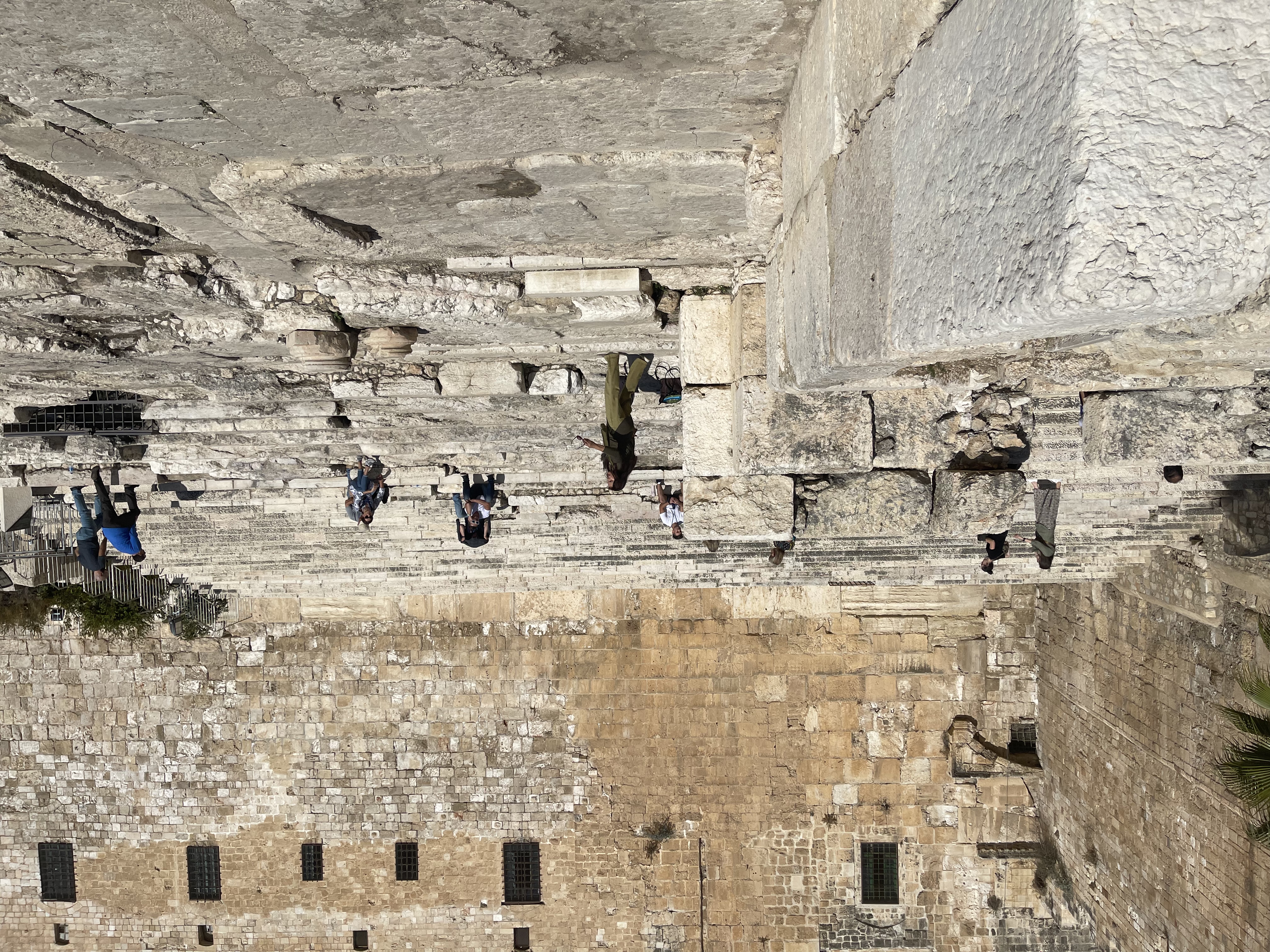
Teaching Steps or Rabbis' Steps where Jesus would have taught
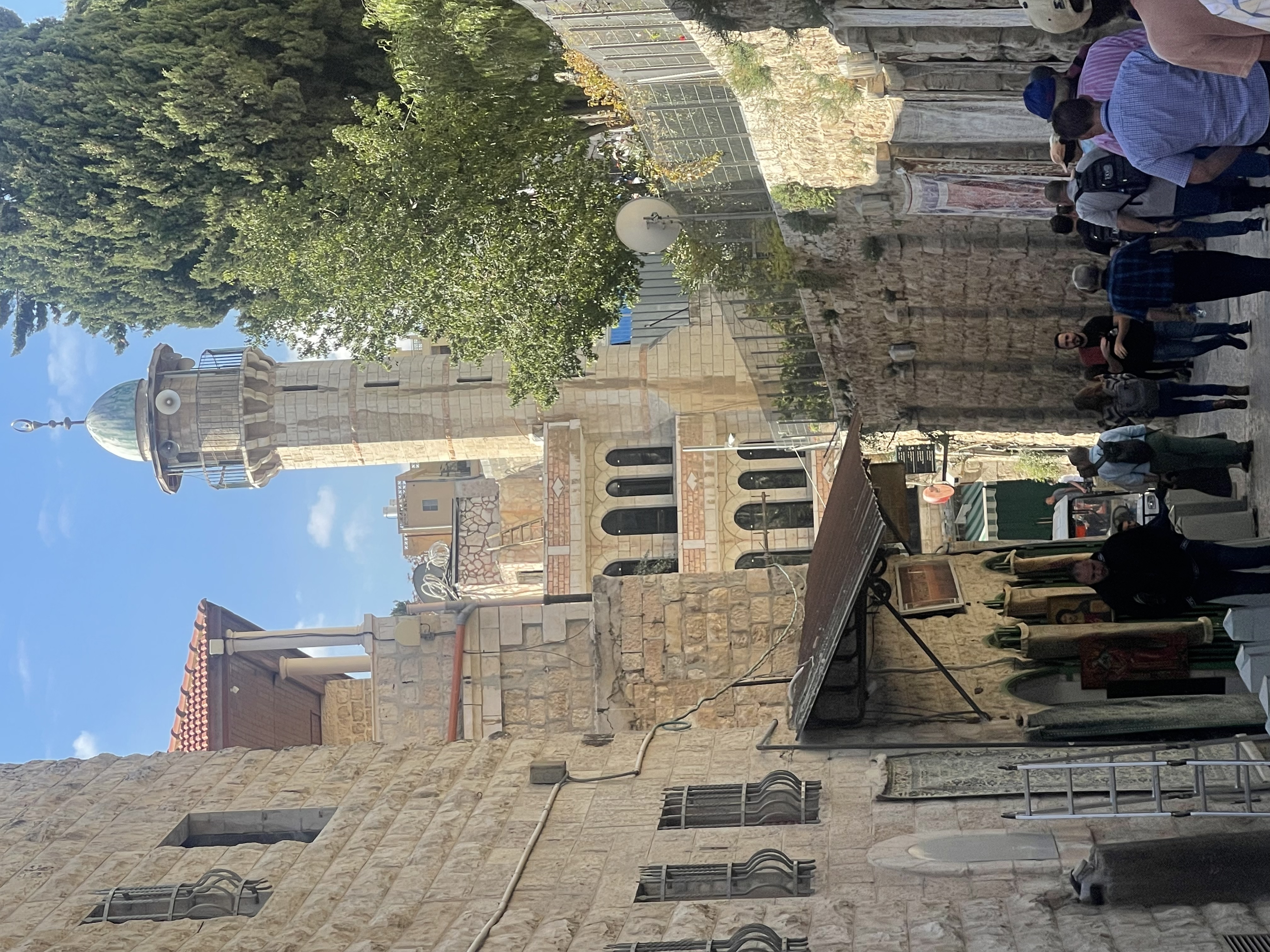
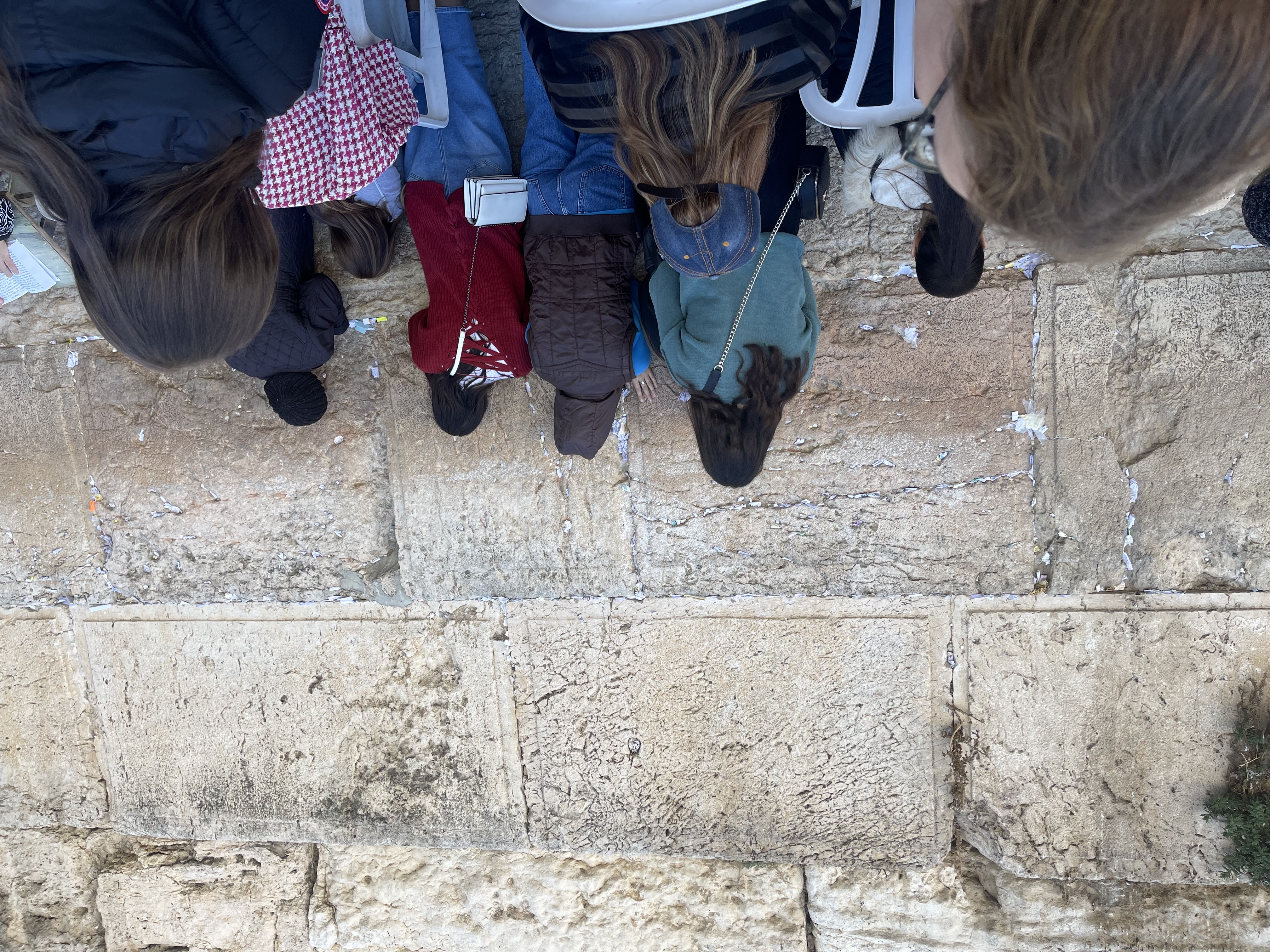
Via Dolorosa; Wailing Wall or Western Wall
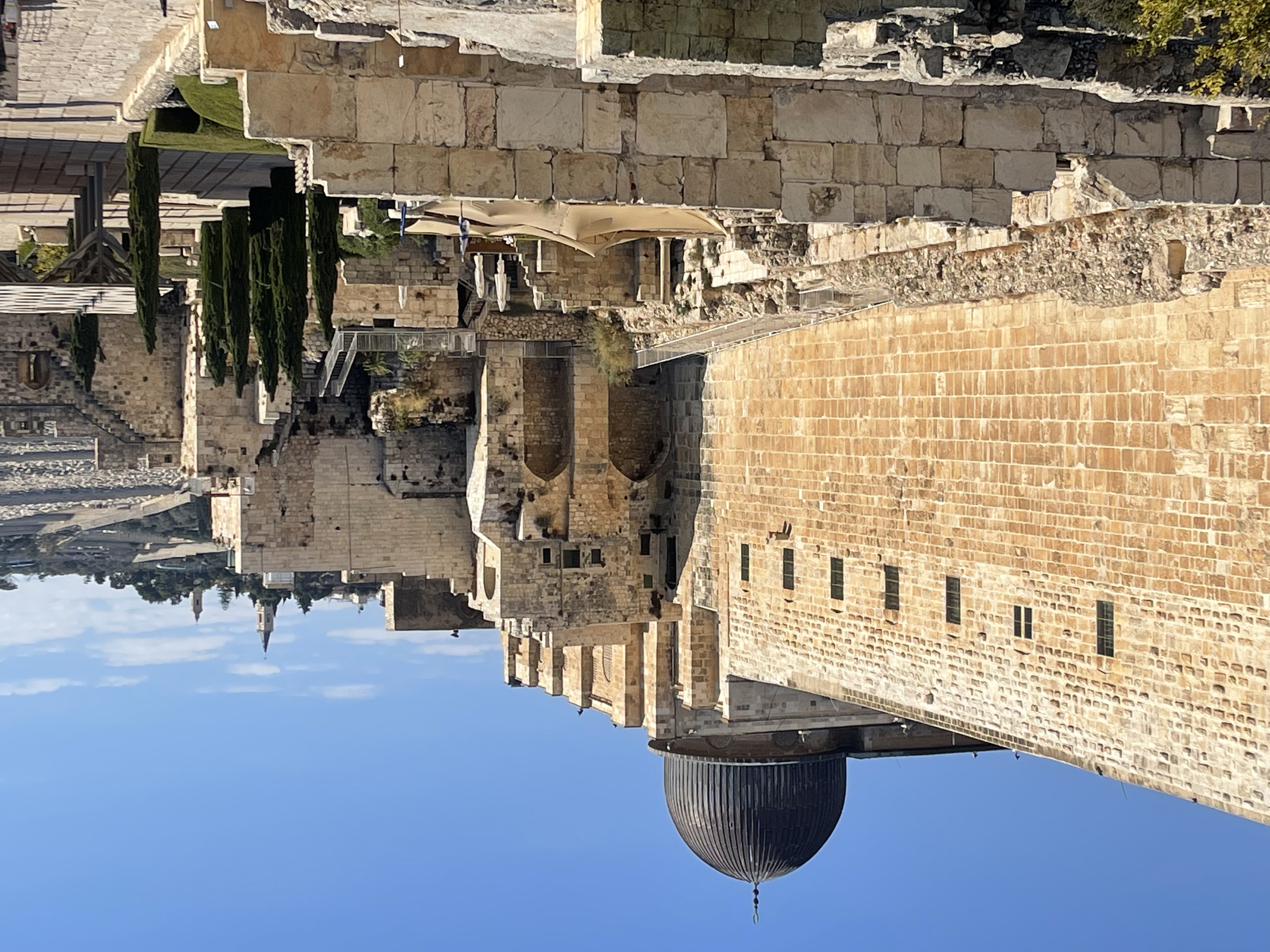
View of Church of the Holy Sepulchre
The next day we boarded the bus at our usual early time and traveled to Ein Karem, the town of John the Baptist’s birth and the location of Mary’s visit to Elizabeth in Luke 1:26-40. We toured the Basilica at Ein Karem and heard the legend about how the infant John the Baptist was saved from death during Herod’s slaughter of the innocents.
I could have stayed there all day in such a serene and lovely setting on such a perfect day surrounded by a cool breeze and sunshine. In the town on Ein Karem, we saw the spot called “Mary’s Spring,” which is supposed to be the place where, on her way to Elizabeth, a spring of refreshing water arose to sustain her in her journey.
We visited The Church of Saint John the Baptist is a Catholic church in Ein Karem that belongs to the Franciscan order. It was built at the site where Saint John the Baptist is believed to have been born.
From there we traveled to Yad Vashem, Israel’s Holocaust Memorial. We spent two hours absorbing the pain of the murder of 6 million Jews, lamenting the ongoing existence of anti-Semitism today, and the museum’s mission that we never forget.
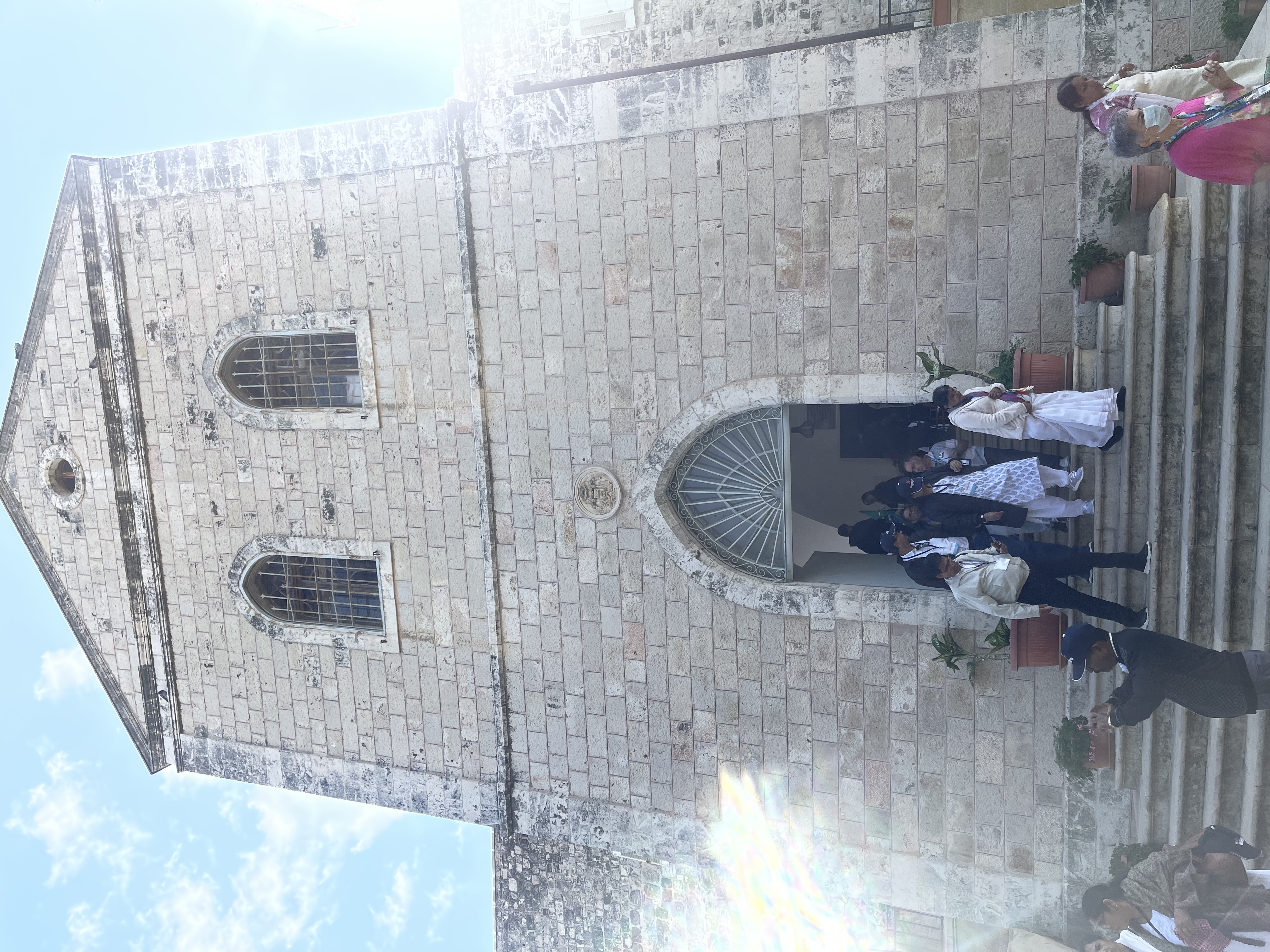
Church of John the Baptist, believed to be the location of his birth
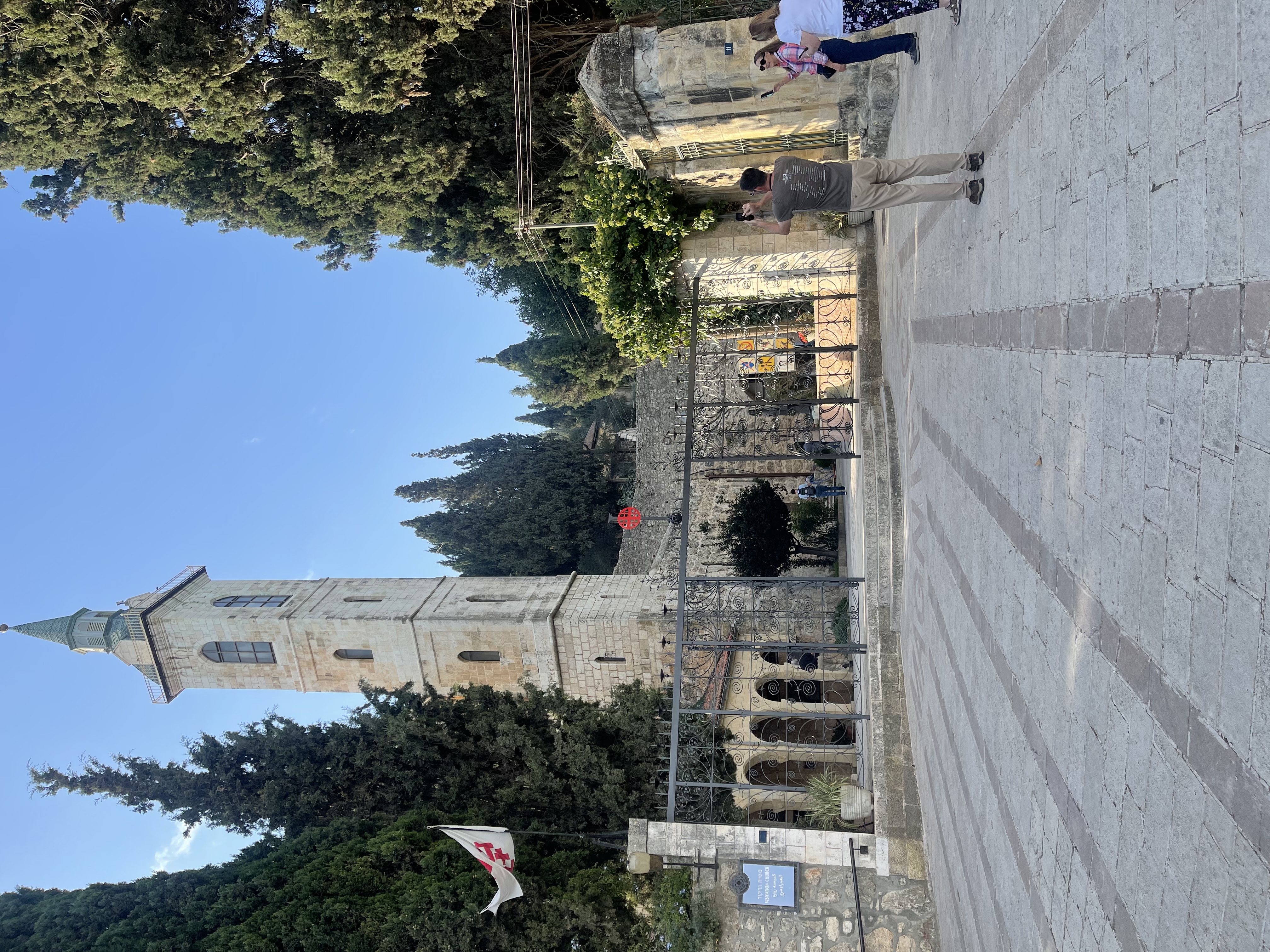
Ein Karem Home of John the Baptist
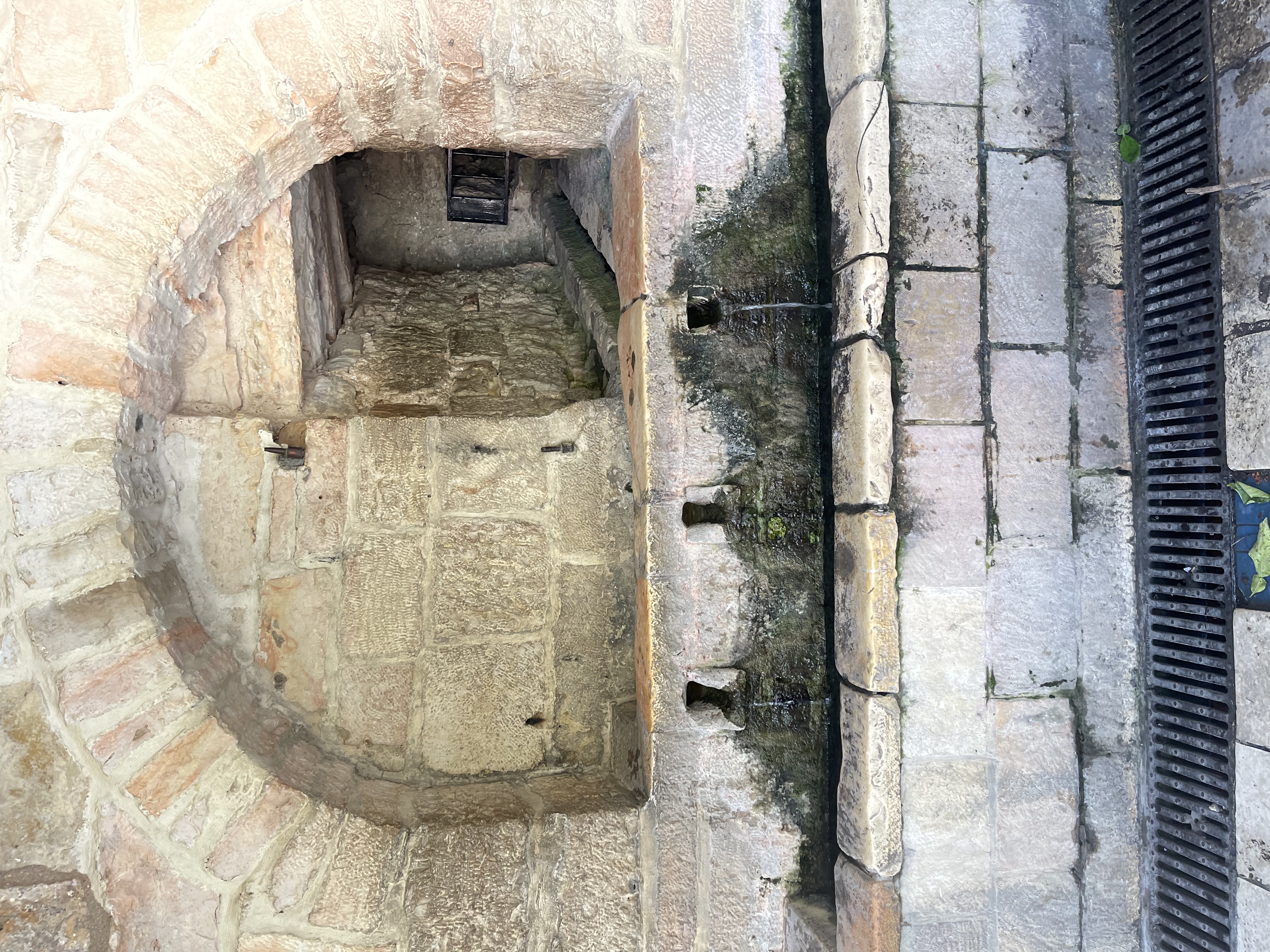
Mary's Spring - spring where Mary found refreshment on way to visit Elizabeth
The next day we boarded the bus for Masada and the Dead Sea. I had been to Masada on my prior trip to Israel in 2014. But I wanted to go again, to take in the magnificent geography and the heroic story of the Zealots’ last stand before being overtaken by the Romans in 73 CE, choosing to kill one another rather than be overtaken by the Romans. Our guide “G” posed the question- did they have a choice? between being enslaved or killed by the Romans and taking their own lives? He was convinced that there is always a third option in a dilemma, two bad choices when caught between a rock and a hard place. We debated that question on the bus ride to the Dead Sea.
It was interesting learning about the Dead Sea, its composition, the reasons for the high salt, high mineral content, and the cosmetic industry that extracted them and sold them in various creams and scrubs around the world. We changed into bathing suits, coated ourselves with mud, let it dry, then rinsed it off. There was lots of laughter, some frolicking and a complete loss of dignity. My low-dignity moment came when my Keen sandal, made of recycled tires, refused to come out of the mud, causing me to fall on my butt before I could clamber onto shore. Unfortunately, I don’t think anyone caught this moment on camera. It would make a great faculty profile picture for the Perkins website.
Messy, muddy, memorable. That sums up our Dead Sea experience.
Onto to Tiberias
We traveled from Jerusalem a couple of hours to Tiberias, a beach town with a lively boardwalk, to stay at The Caesar Hotel, a comfortable, attractive hotel on the Sea of Galilee for the rest of our trip..
Our next day of touring we visited Nazareth, Jesus’ boyhood home, and the scene of their rejection of him and attempt to throw him over a cliff (Luke chapter 4). The scene is now called Mount Precipice. It’s easy to see how this site would be ideal to push someone over the rough rocks and steep incline. But Jesus had other plans. “He passed through the midst of them and went his way.” (Luke 4:30)
From Nazareth we traveled onto Caesarea Maritima, Herod the Great’s magnificent city on the Mediterranean built in honor of Caesar. The ruins are impressive, the setting stunning in its natural beauty. We saw the hippodrome where horse races were held and the amphitheater by the sea which still hosts events today. We saw the box above the hippodrome where Herod is purported to have died an extremely painful and unpleasant death, the details of which I won’t go into here. We drove by one of his aqueducts. Not that it makes up for the egregious cruelty that characterized his reign, but he did build a lot of stuff.
Caesarea was where an angel visited Cornelius the first Gentile believer (Acts 10) and where Paul was imprisoned for two years before appealing to Caesar.
We then traveled to Megiddo, mentioned 13X in the Bible, one of the most important archaeological sites in Israel. It was Solomon’s preferred residence, and the site of multiple historic battles for control of this area. The introductory video called Megiddo “a 30-layered archaeological cake.” It shows evidence of the habitation of several eras: Herod, Hadrian, Byzantine, and Crusader. We walked under the tunnel dug deep in the rocks. I walked through it very fast because being in underground, enclosed, dark places for extended periods of time is not my favorite thing.
Throughout our whole trip, “G” kept up a running commentary connecting the geographies we were traversing with their First Testament backstories. If anyone didn’t know their patriarchs, matriarchs, judges, kings, and prophets before the trip, they did by the end. From Abraham and Sarah, to Deborah and Jael, to Joshua and Jericho, to David and Solomon, to Elijah and the priests of Ba’al, to Jacob and Esau, to Joseph and his brothers, the whole sweep of history was our backdrop in the context of the various invading powers, Assyrians, Babylonians, Persians, Greeks and Romans, after the fertile land and trade routes of the land. Once he found out we were a group of pastors, he adopted the Socratic method of asking Who? And Why? To continually challenge and brush up our knowledge of history and people

Ruins of Caesarea Maritima, Herod's magnificent Mediterranean city built in honor of Caesar
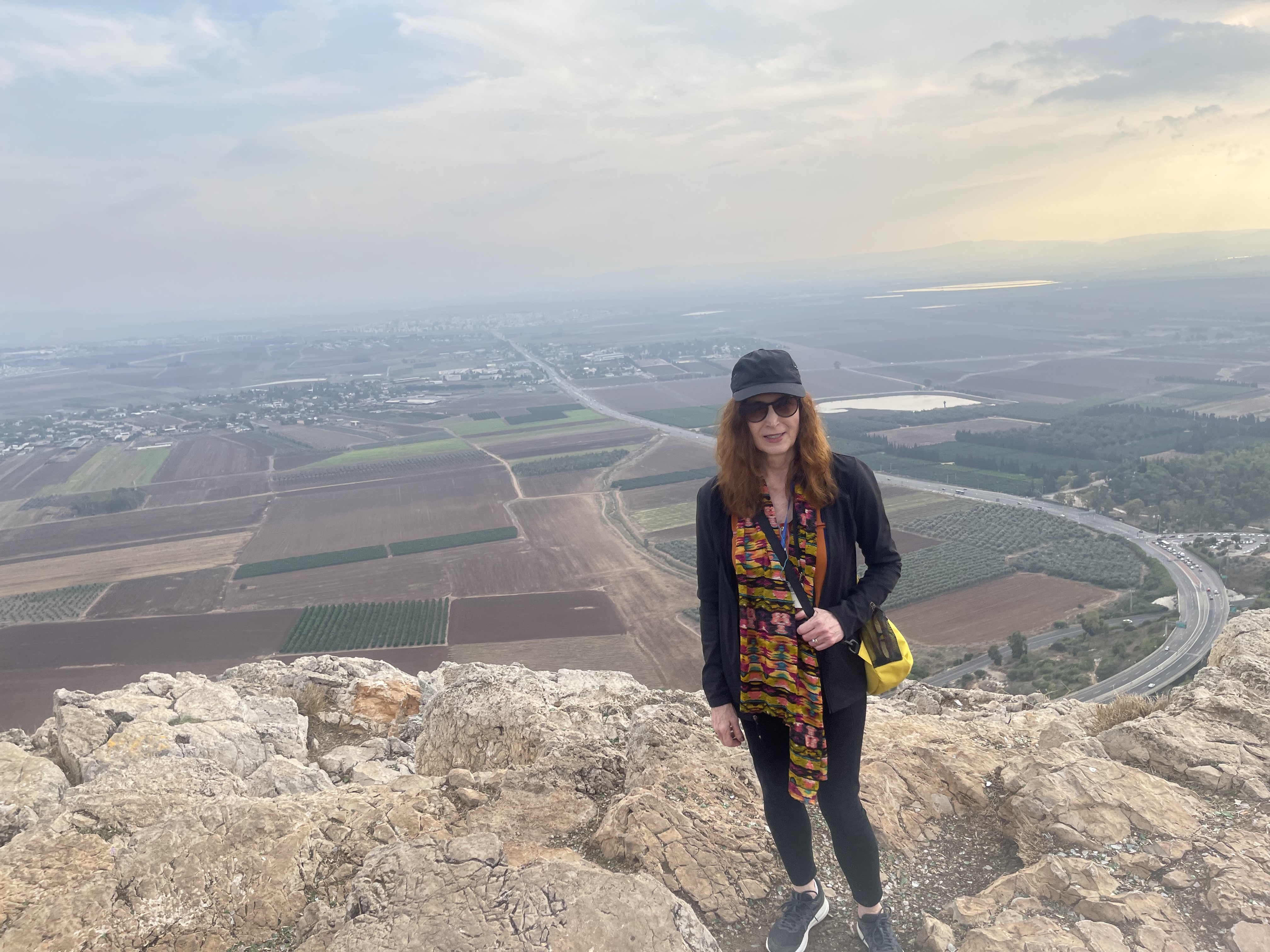
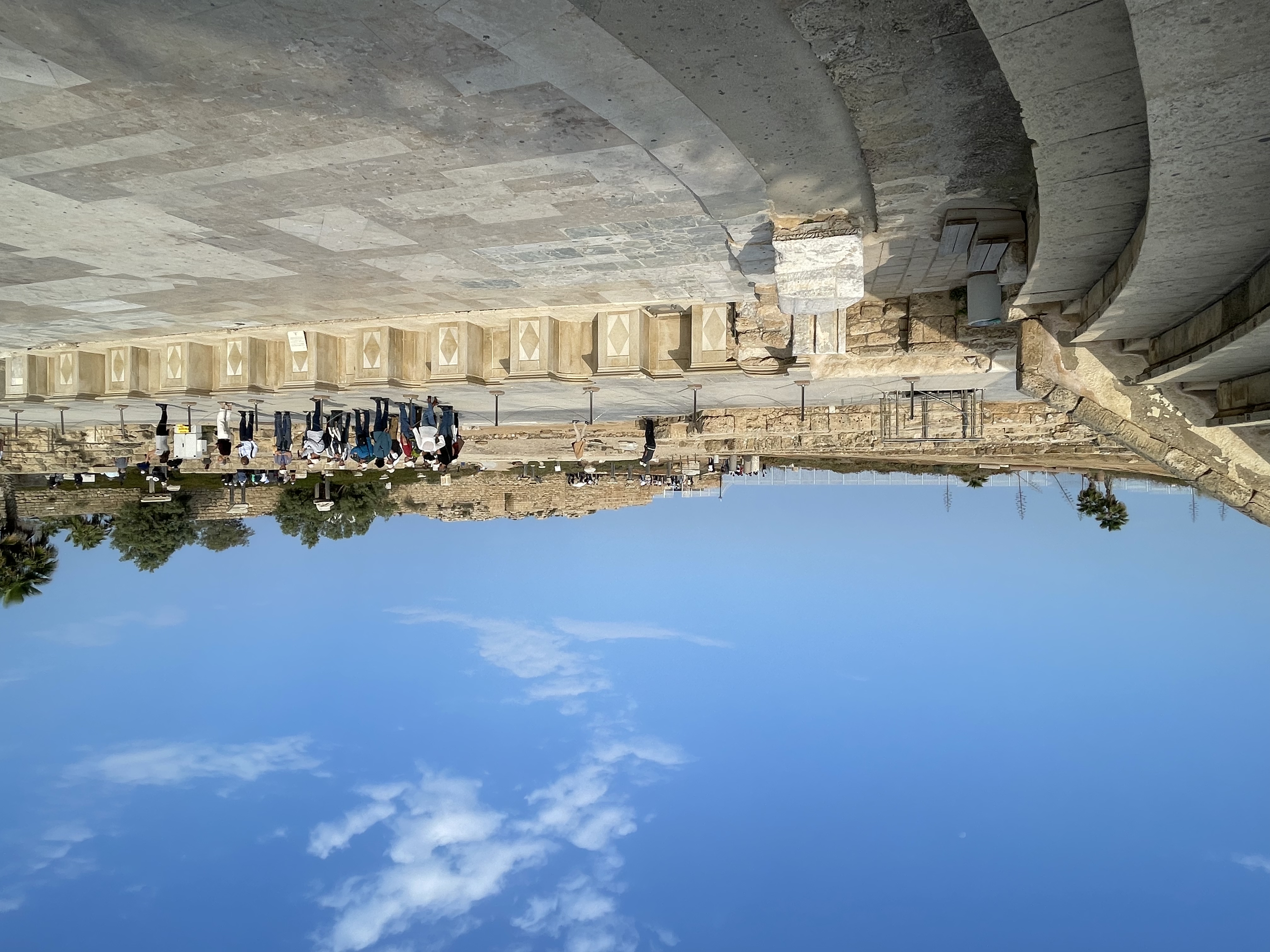
Amphitheater Caesarea Maritima
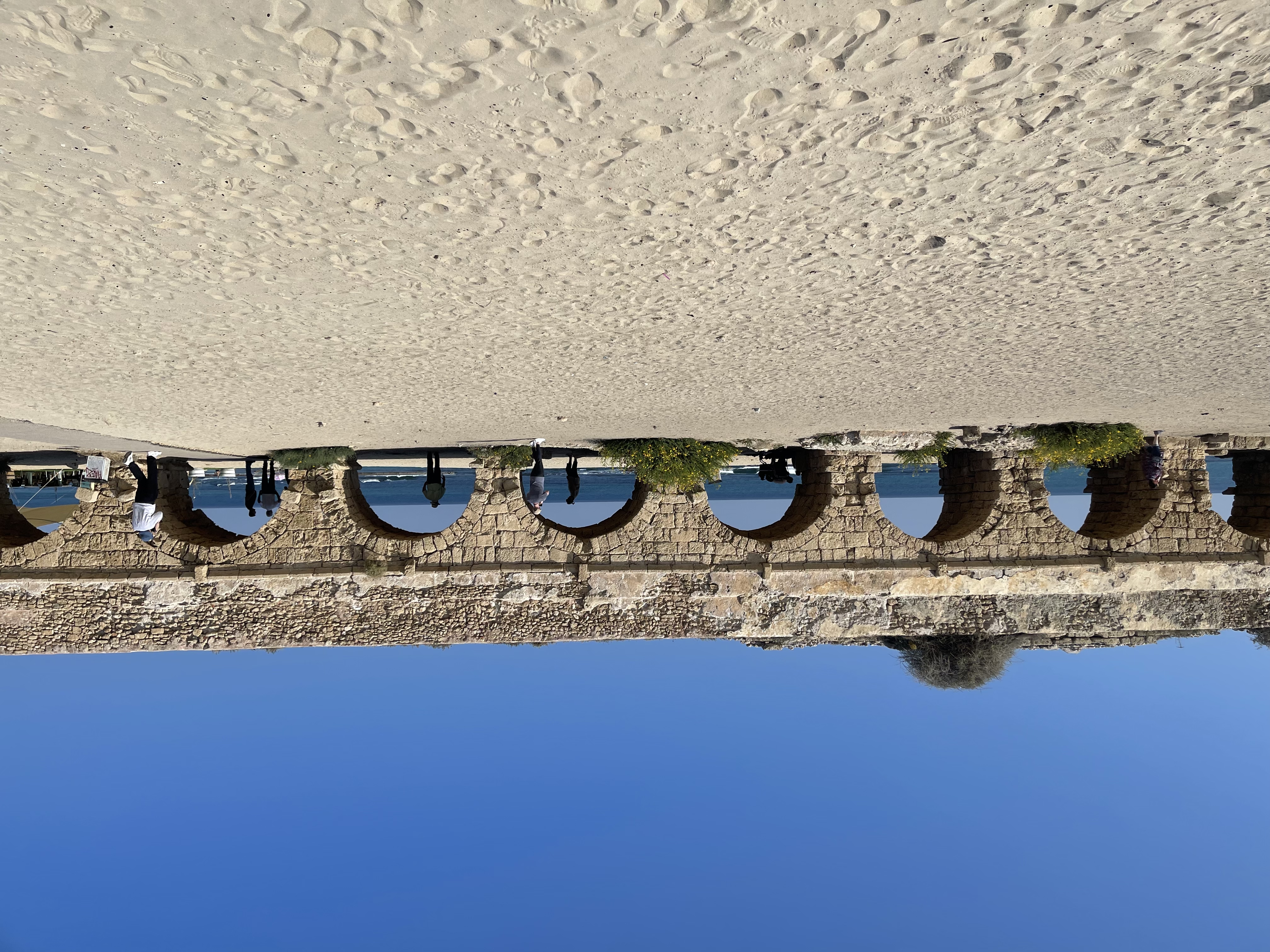
Aqueduct built by Herod near Caesarea Maritima
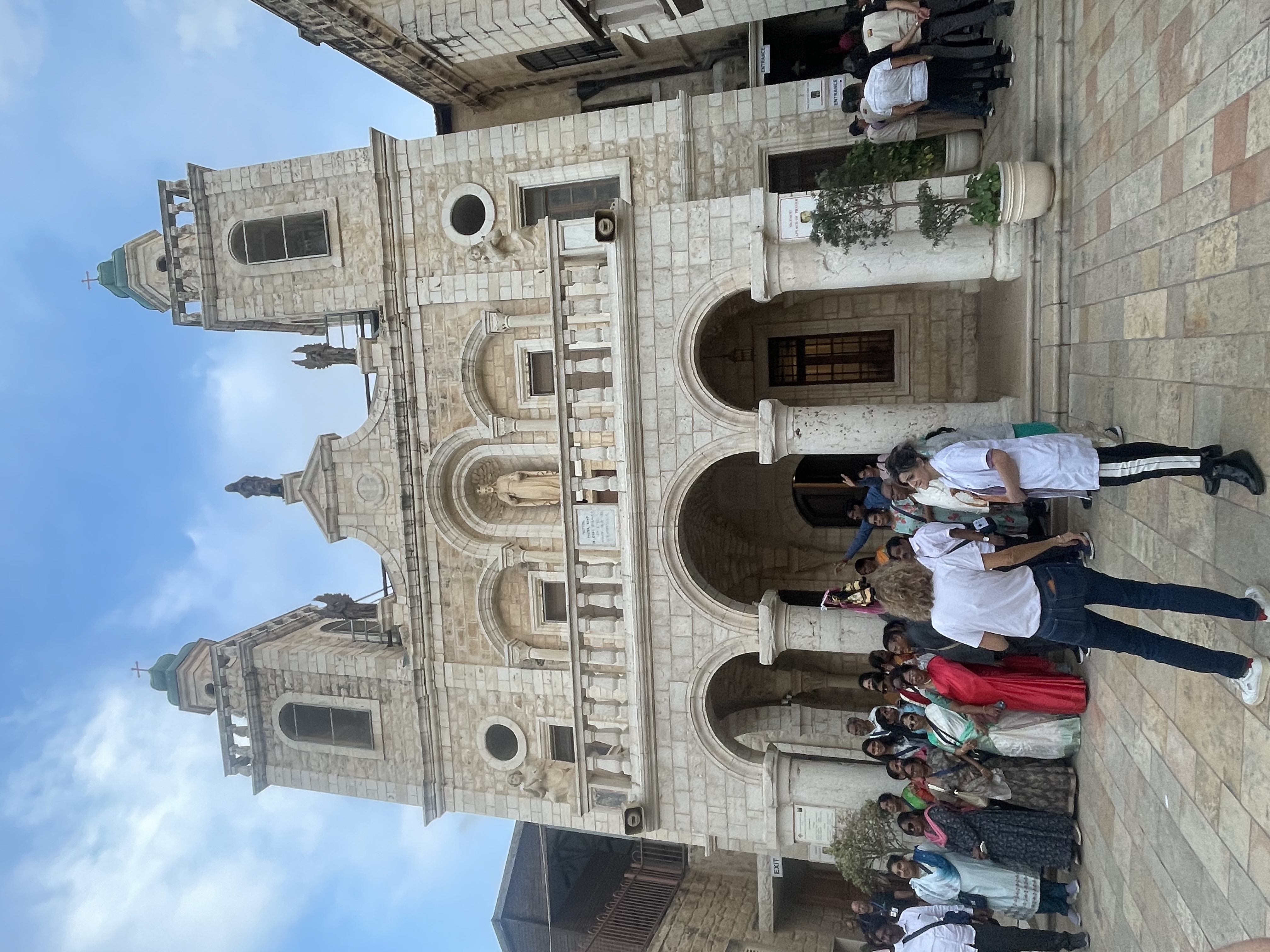
Chapel built on purported site of Jesus' first miracle at Cana

Herod's box overlooking his horseracing track where he is purported to have died a painful and repulsive death
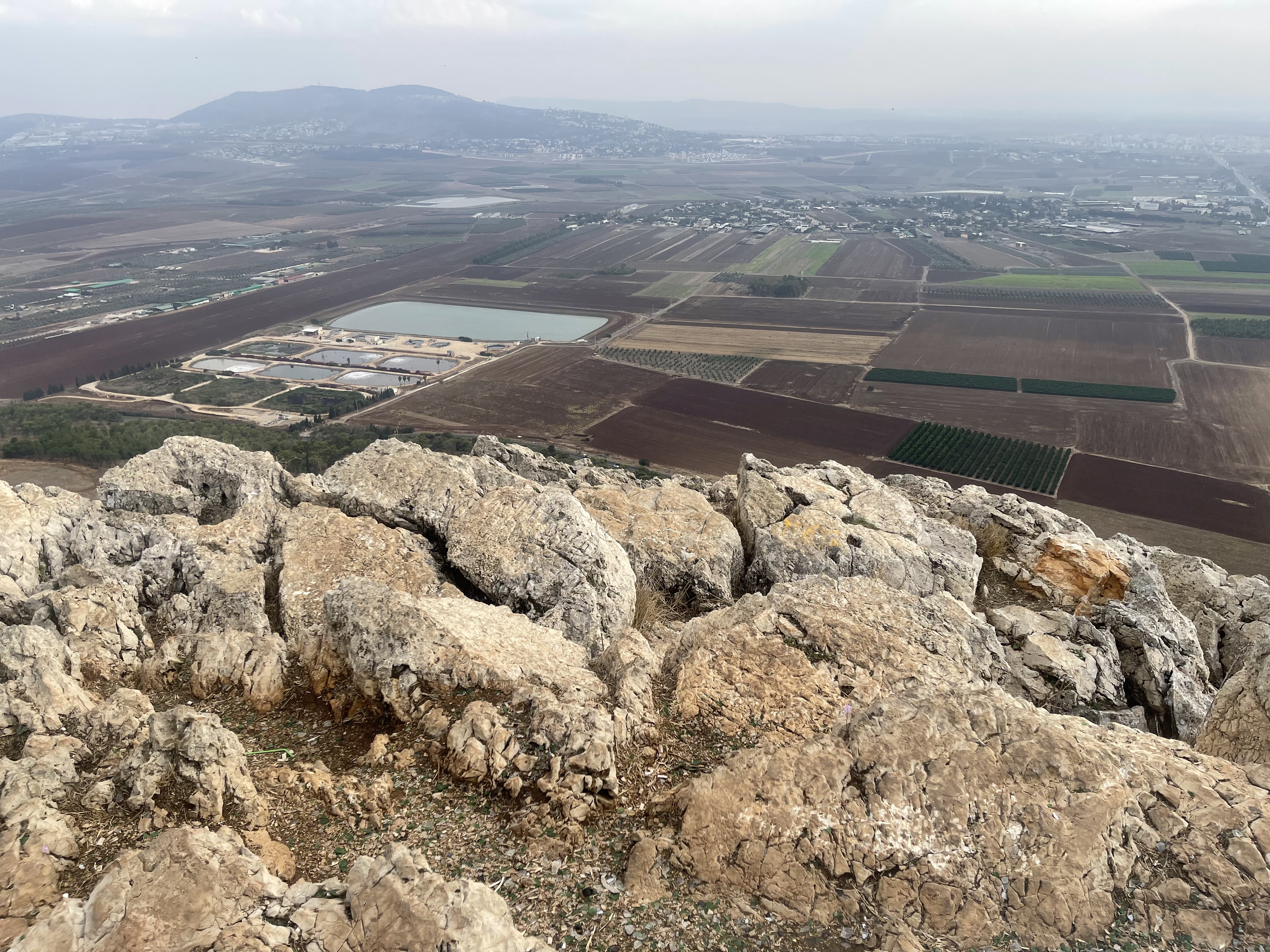
Mount Precipice, Nazareth where townspeople tried to throw Jesus off a cliff (Luke 4)
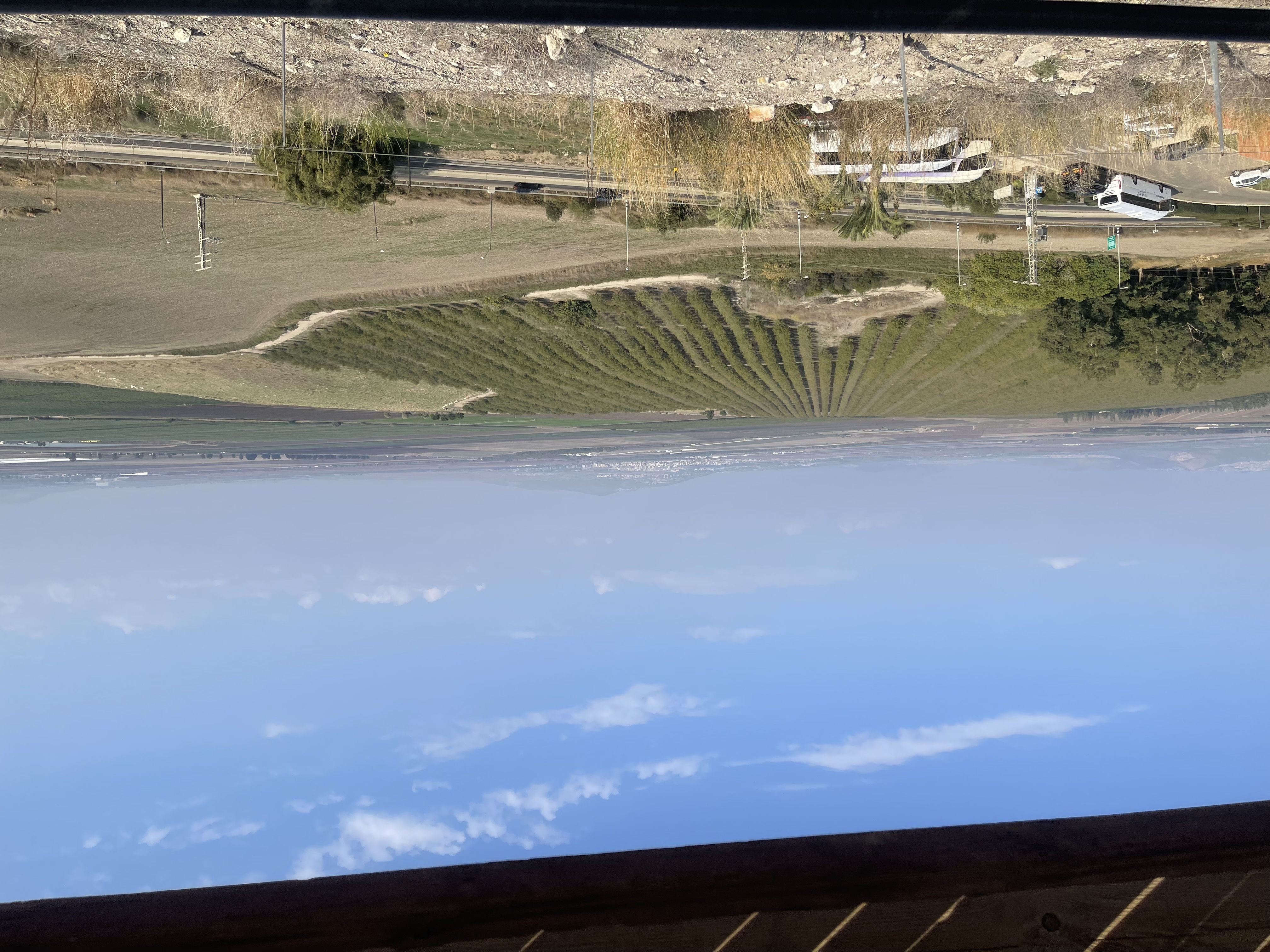
Plain of Megiddo
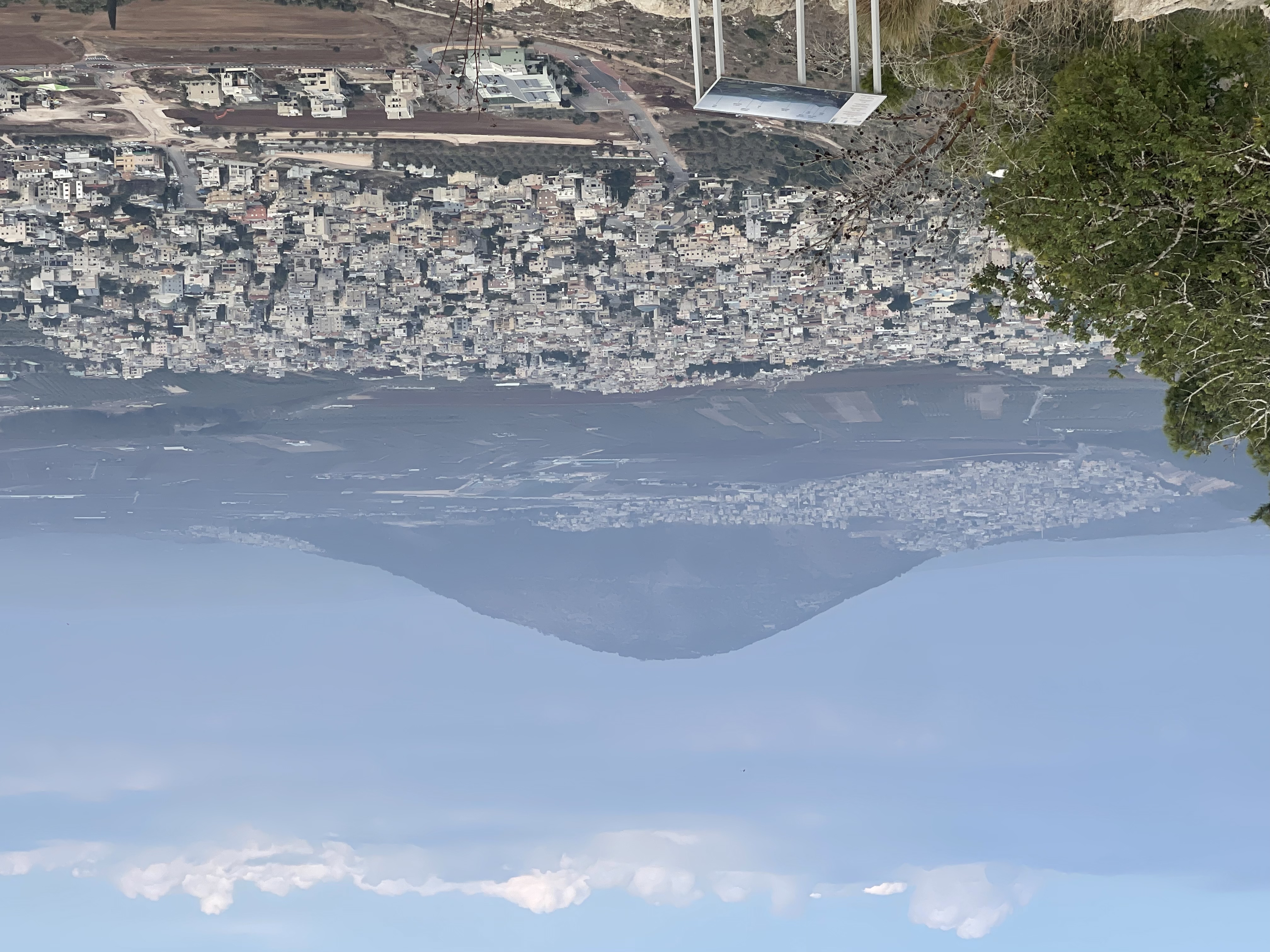
Possible site of Transfiguration

Rev. Liz Talbert leads couples in the group in a lovely Renewal of Wedding Vows at Chapel in Canaa
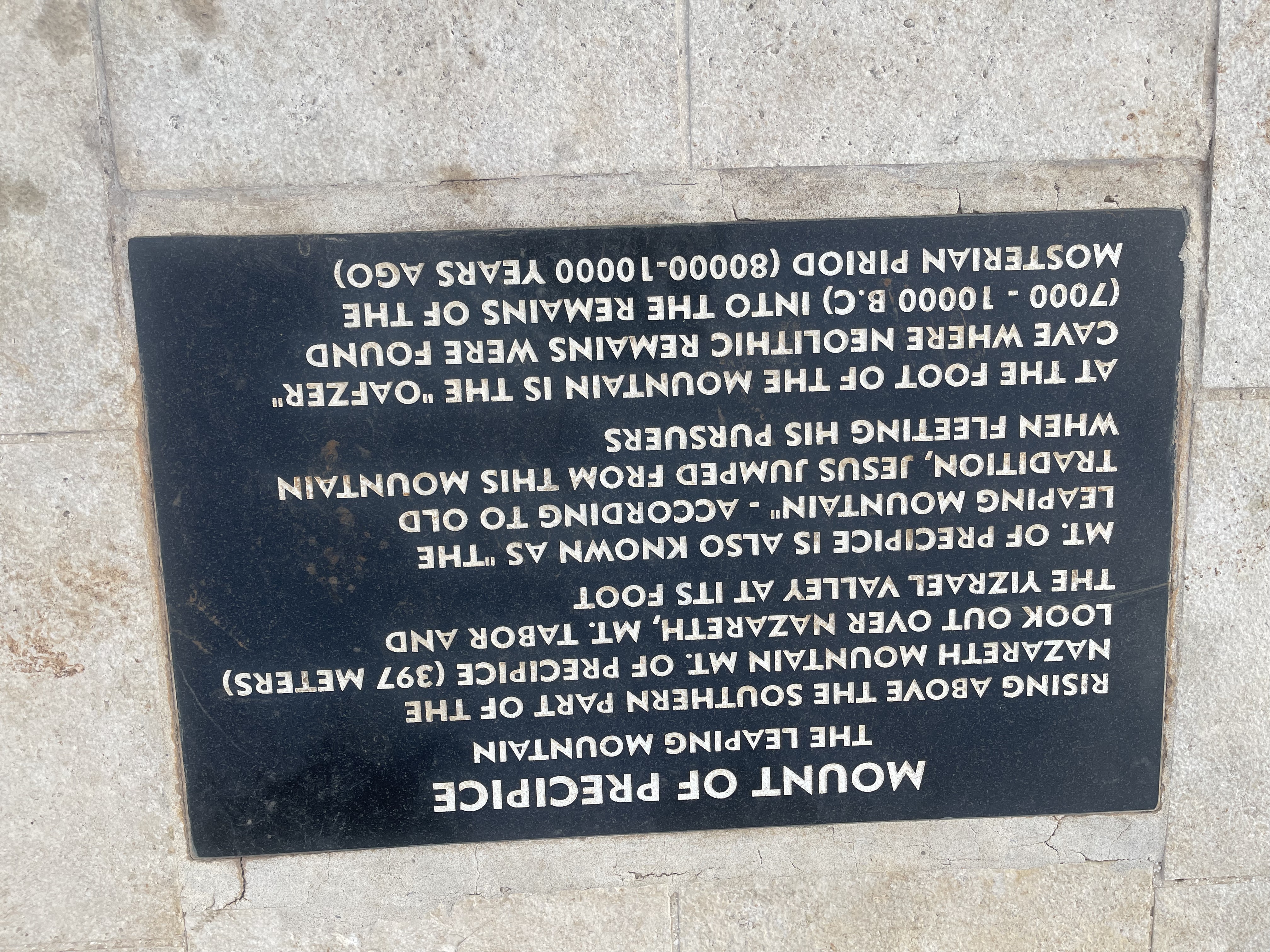
The Mount of Precipice
Our final day was full of visits to memorable sites. We began with a boat ride on the Sea of Galilee. As a child, I had a Bible with a picture of the Sea of Galilee and men fishing meant to be Jesus and his disciples.
I remember being quite taken with the way the sunlight glimmered on the water in that picture. The sight of the sunlight glimmering on the real Sea of Galilee before me activated that childhood memory of faith. The sensation was, not that, isn’t it inspiring that he was here? Isn’t it amazing that he is everywhere?
We visited the lovely village of Capernaum, home of Jesus once he was rejected by his hometown of Nazareth and saw Peter’s house and the synagogue where Jesus may have taught. (Matthew 4:13,23)
Our next stop was the Mount of Beatitudes (Matthew 5-7) and the Church of the Beatitudes, a Roman Catholic church located on the Mount of Beatitudes by the Sea of Galilee near Tabgha and Capernaum in Israel. Then it was onto the Church of the Loaves and Fish at Tabgha, the traditional site of the feeding of the 5,000 (Luke 9:10-17).
We then went on to see the Chapel of the Primacy, where Peter professed his devotion three times to the risen Christ. (John 21) This site was inspiring to me, as is the John 21 account of 3-fold betrayal met by 3-fold forgiveness, but not left there, passively resting on the laurels of forgiveness, but nudged by a commission. Possibly being near the site where Jesus served up both fish and a task for us was a highlight of the trip for me.
.jpg)
Sea of Galilee
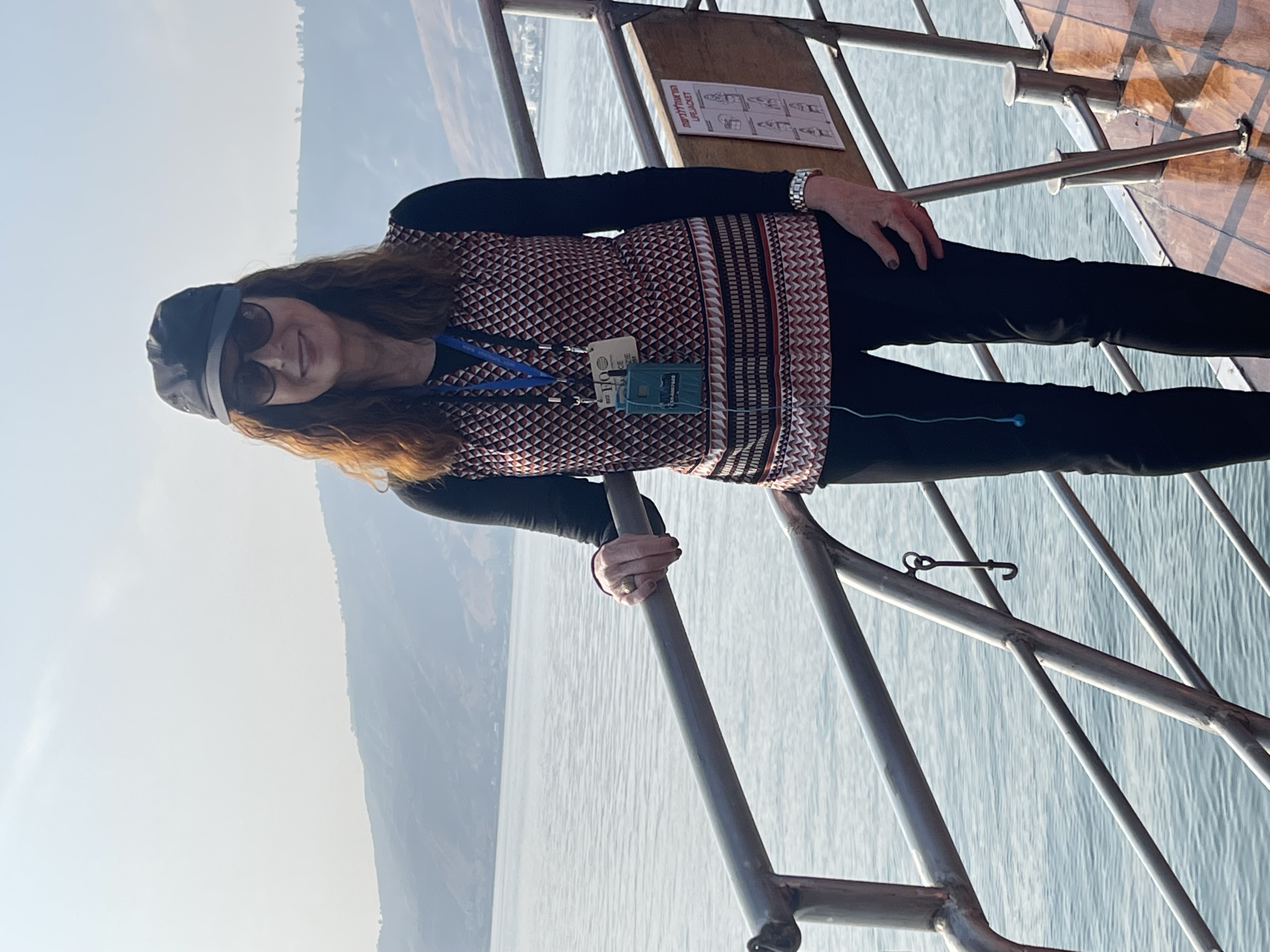
By the Sea of Galilee
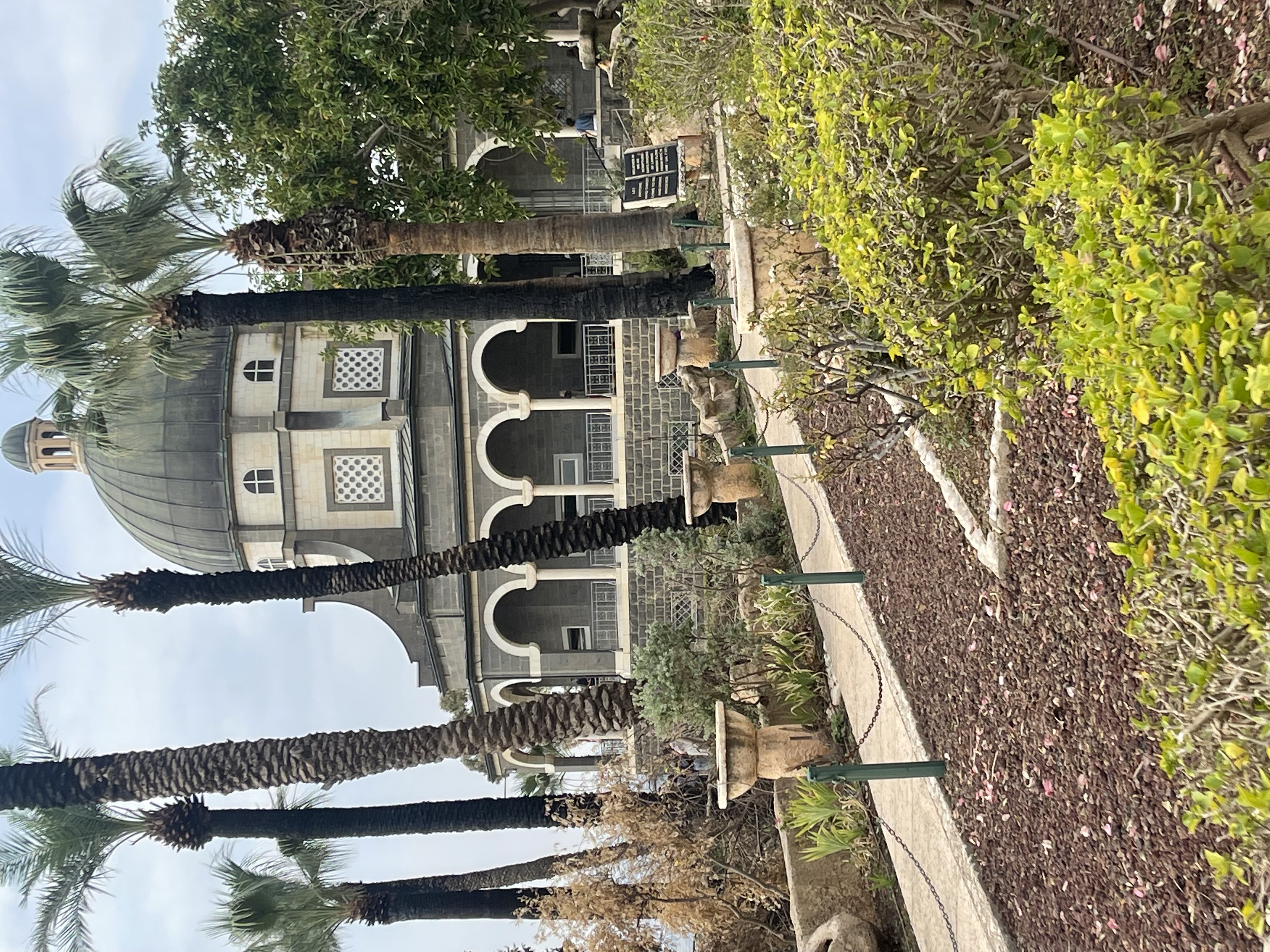
Church of the Beatitudes
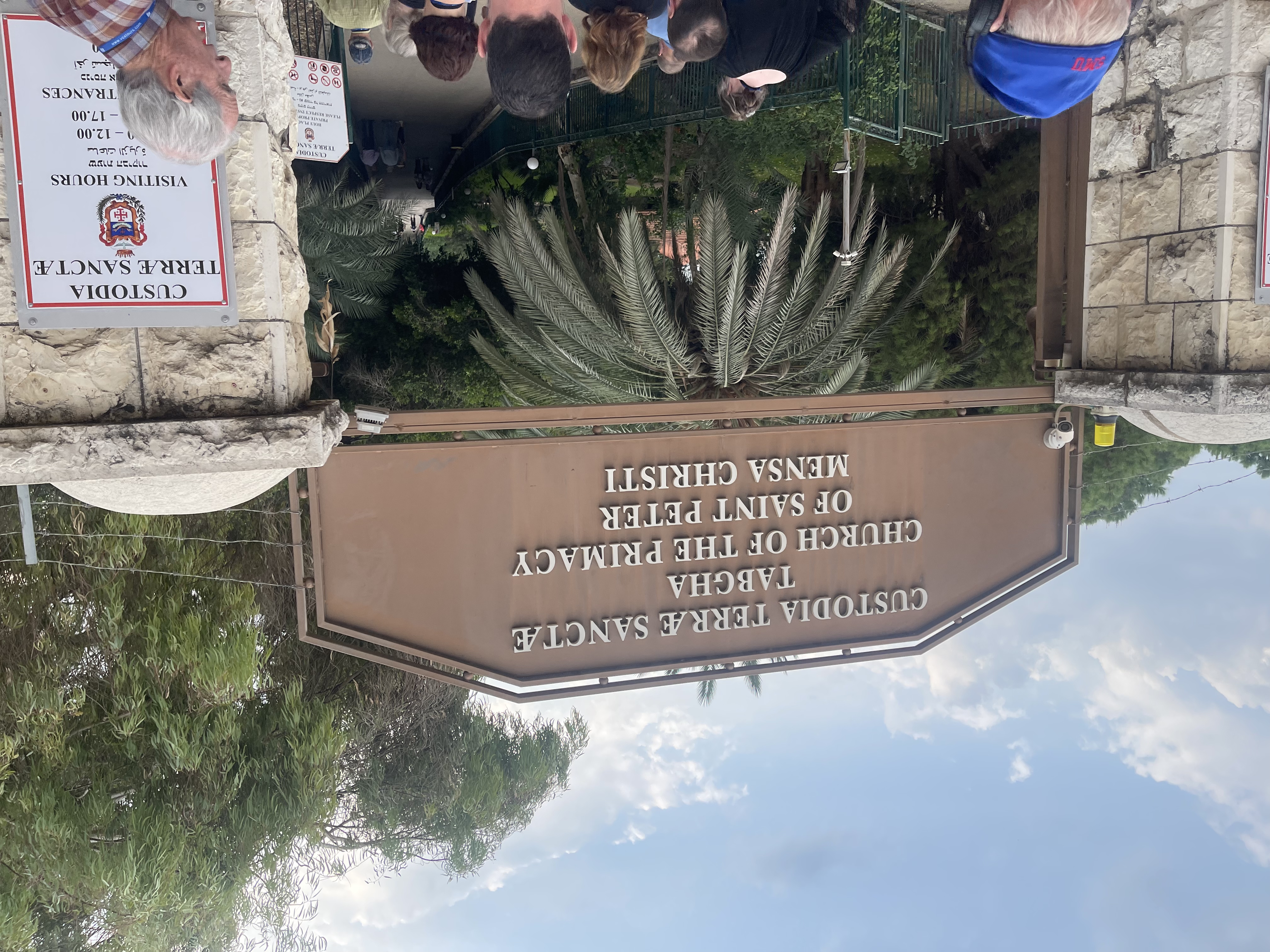
Church of the Primacy of Peter
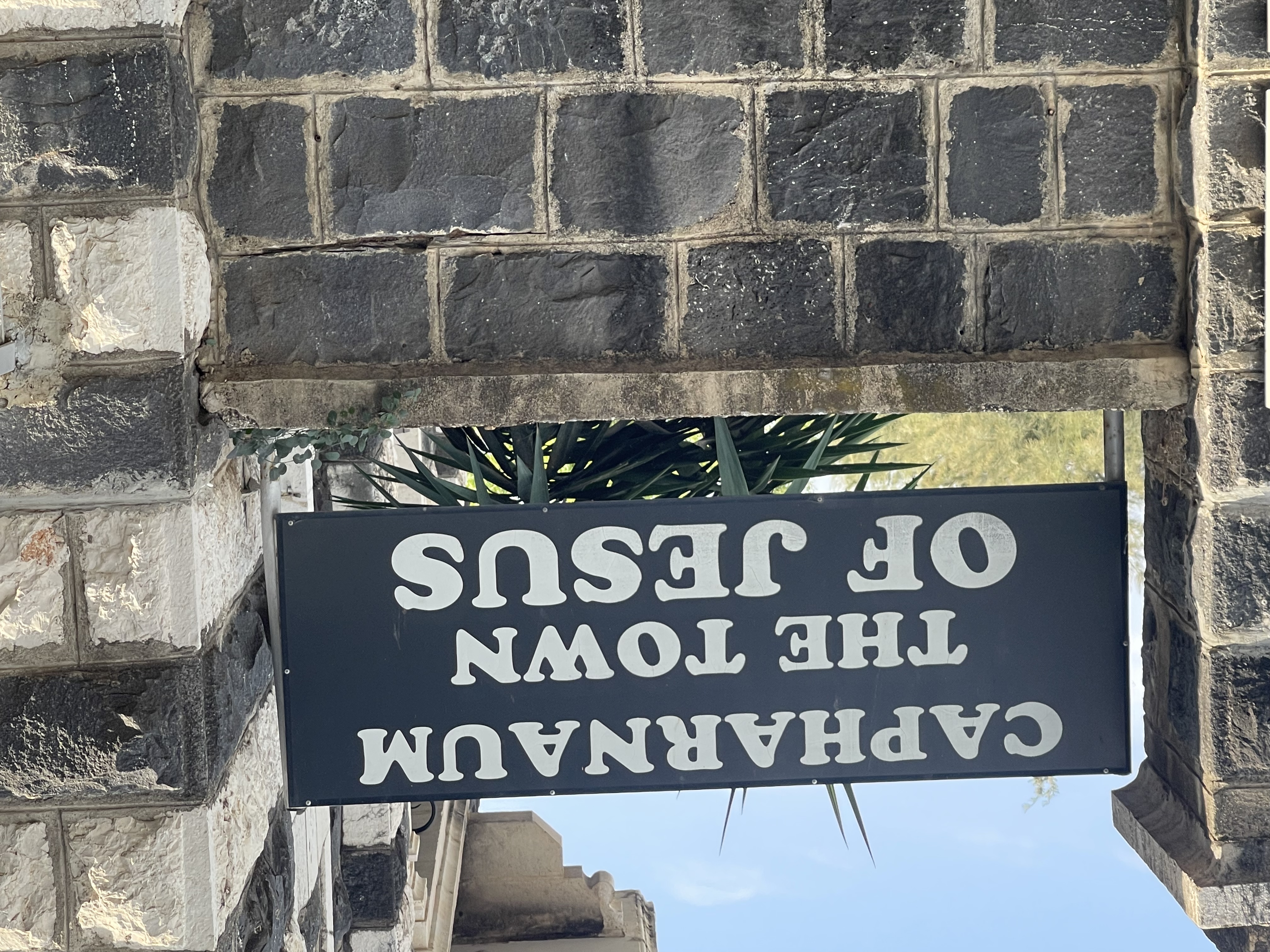
Home of Jesus after he is rejected by Nazareth
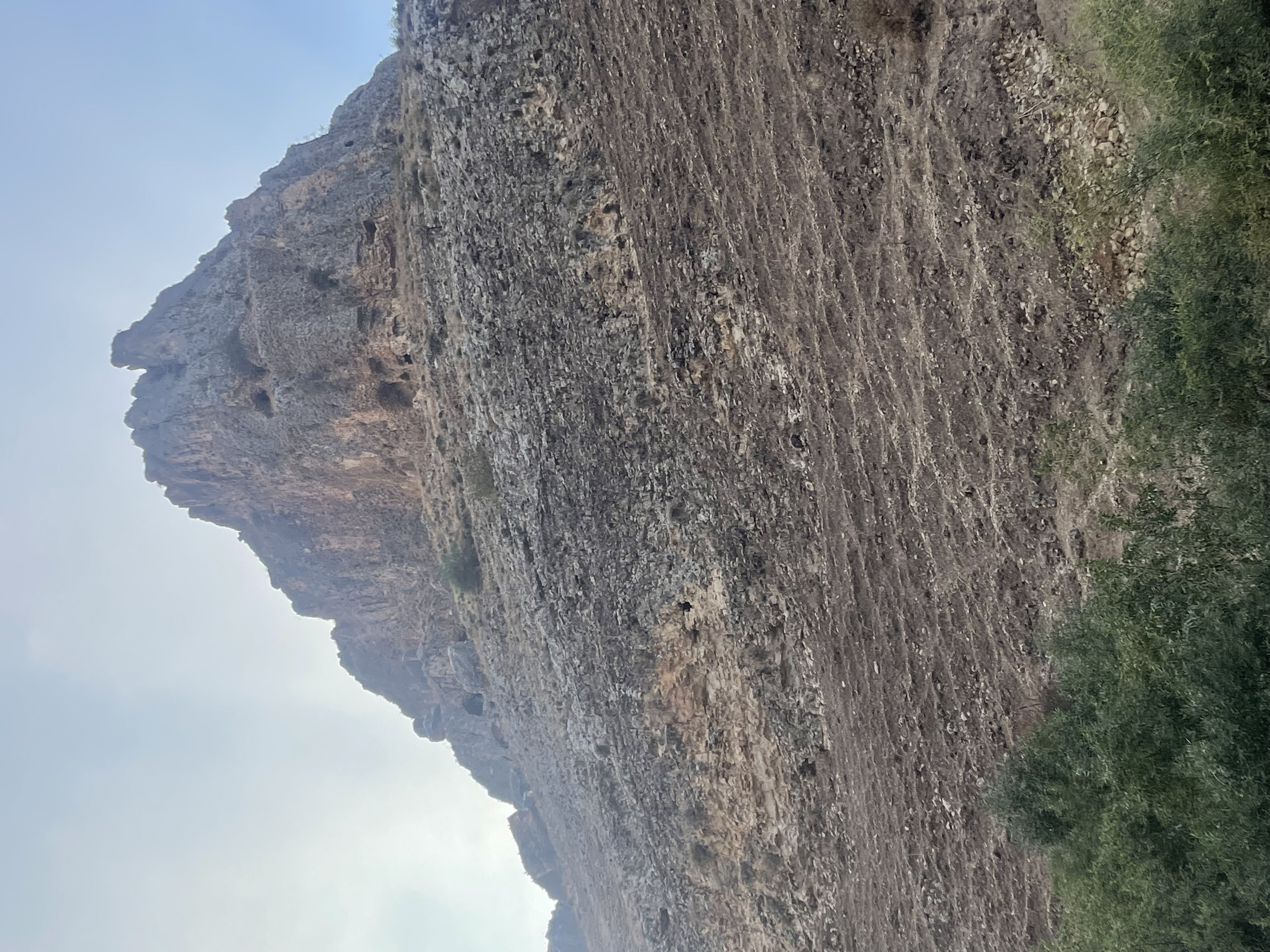
The location of the Great Commission
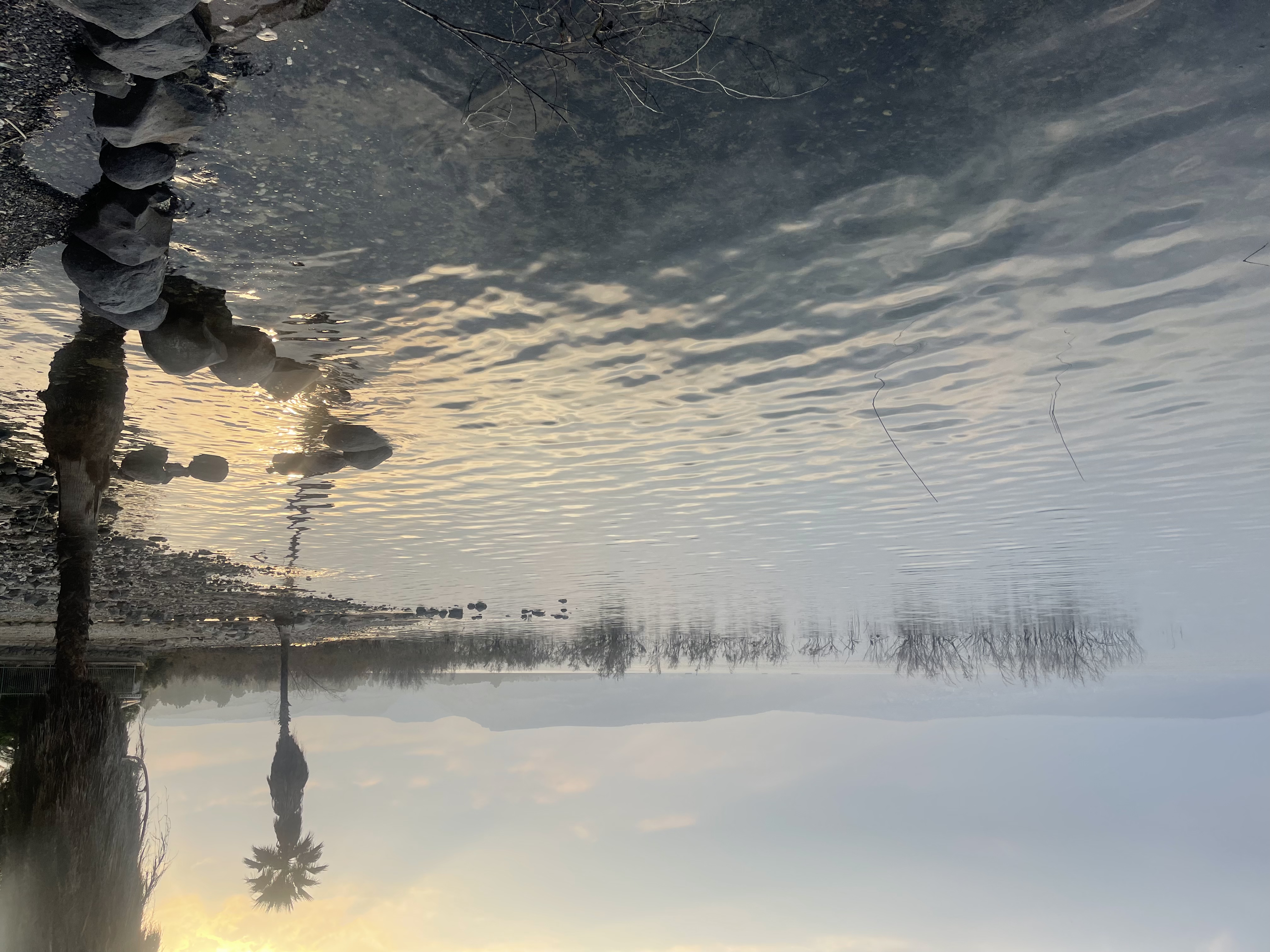
The purported location of Jesus' post resurrection breakfast with his disciples
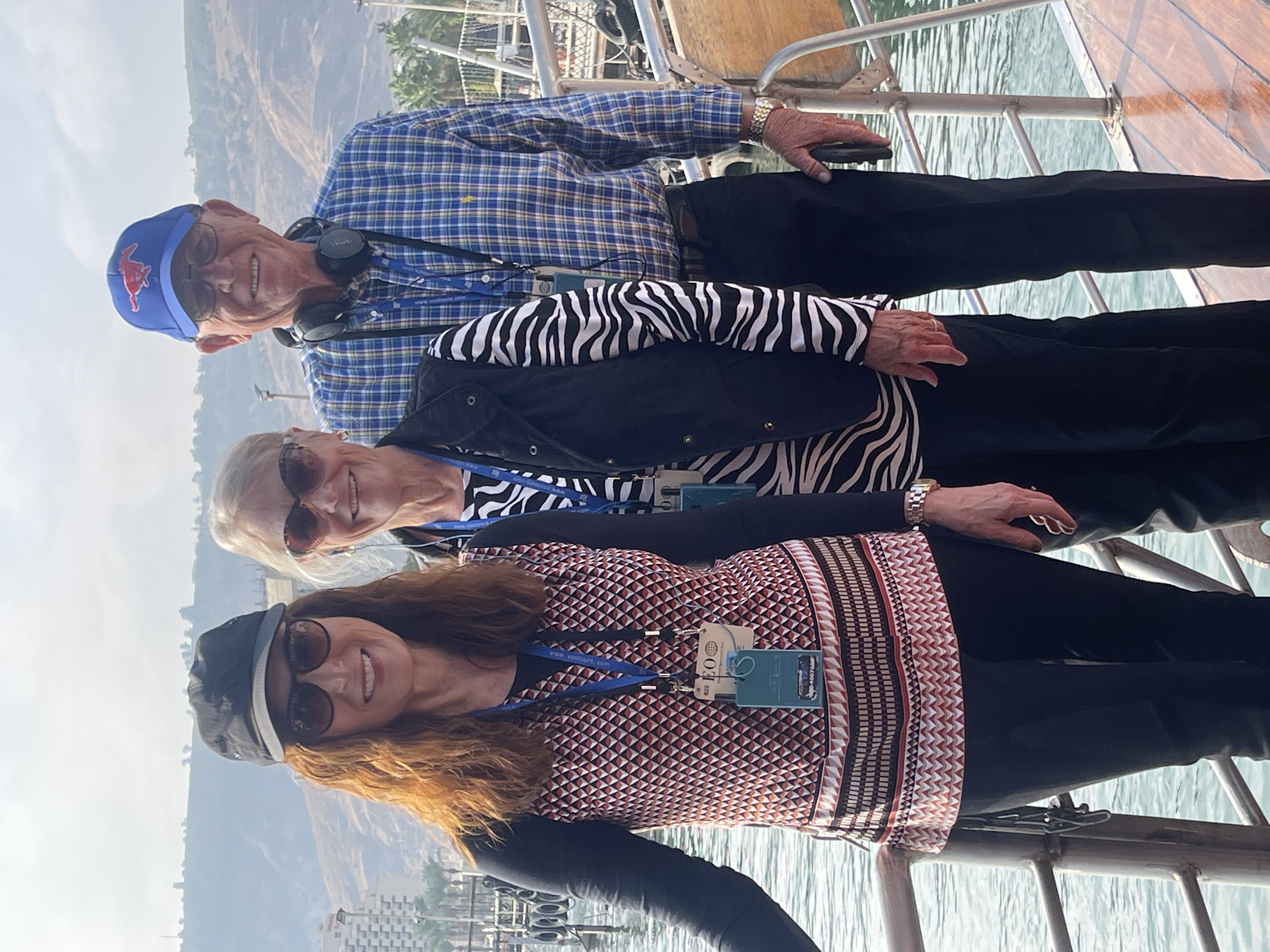
With Johnny and Maurice Irish!
After days 3, 5, and 7, I led workshops helping participants process their impressions and begin to reflect on how they might shape sermons and sermon series. Everyone chose a “preachable” each session and discussed how close attention to each site or scene we visited could yield insights for sermons from the setting (with imagery and detail) to the plot (always involving conflict), to the character(s) (with whom we identify or not), and a theme. The acronym I offered was S-P-C-A. It has nothing to do with animals (Society for the Prevention of Cruelty to Animals), but a memorable way of approaching scenes for preaching. Maybe we could call it The Society for the Propagation of Creativity in Ancient Texts!
Our final day we boarded the bus for the airport in Tel Aviv to get our 4-hour flight to Frankfurt. We had to leave at midnight so we could arrive in plenty of time to go through customs and catch our flight to Frankfurt. We left late, so barely made our connection. We got to the gate as it was boarding. But we made it. And, thank heaven for small favors, I had an aisle seat with no one next to me!
I got to watch the rest of Death on the Nile and find out who killed the murder victim (I won’t reveal details in case you want to see it). Well into the flight, they came around offering wine. I had lost track of what time it was in between all the time zones, so thought, What the heck? After drinking it I fell asleep for several hours. Probably their intention.
Home safely and grateful for the generosity of Rev. Johnny and Maurice Irish who made the trip possible, to Rev. Todd Harris for the invitation to be guest lecturer, and the participants, for their creativity and commitment to Making a Scene in the Pulpit!
Before the trip, I told the group three things about pilgrimages. They were largely concepts in my head.
Now that I’m home from the trip, they have moved from head to heart!
- Pilgrimages involve getting out of our comfort zones
- Pilgrimages are communal – we don’t make them alone. We need each others’ protection and support along the way.
- Pilgrimages bring about change – in our thoughts, emotions, and actions.
